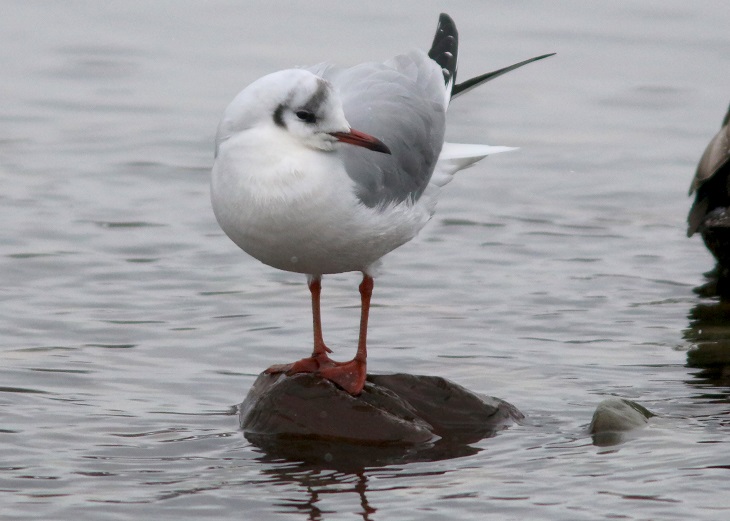From the Field
March 27:
Jake Mohlmann reports from the field in Nebraska 2023
We recently completed covering just under 1,000 miles of paved and dirt roads through the center of America’s Heartland on the WINGS Nebraska 2023 tour.
Our group in the Sandhill Crane Capital of the World!

Our tour focused on the epic crane migration.
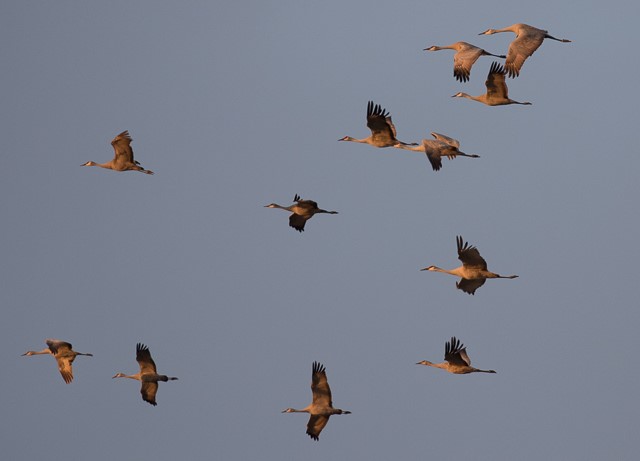
To say it was an unusually cold spring would be an understatement. On both mornings we watched the sunrise along the Platte River numerous ice chunks, some as large as basketballs, greeted us as they bumped up against each other steadily heading downriver. Caught up in the mix was a Snow Goose with an injured wing trying to find its place amongst the current. Of the hundreds of thousands of Snow Geese we saw over the week, this was by far our best look. Also in the large flocks of Snow Geese were a small percentage of Ross’s Geese, easily told apart in flight, especially with a telling picture of them overhead.
A Snow Goose floats amongst ice on the frigid Platte.
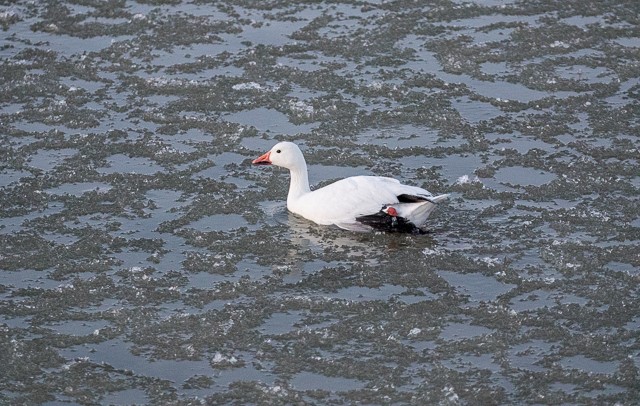
Snow Geese flocks contained the smaller Ross’s as well.
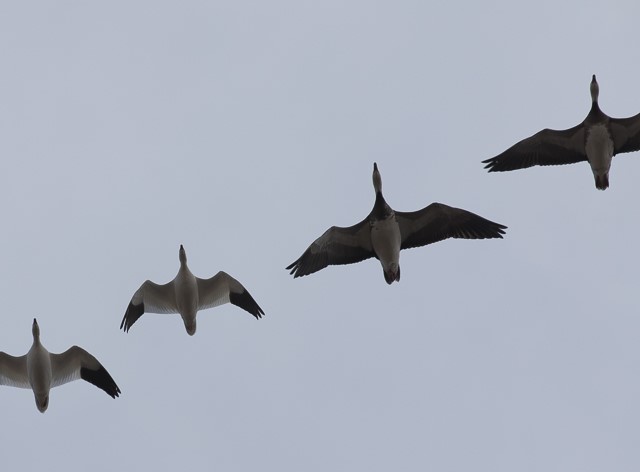
Every day we had a chance to run into several sparrow species including flocks of Tree, skulky Fox, and several varieties of Dark-eyed Juncos along the roadsides. By far the highlight of the sparrow show were several very confiding Harris’s Sparrows seen multiple days that sat perfectly still, one even singing his beautiful song our final morning.
Harris’s Sparrow is a midwestern specialty seen quite well.
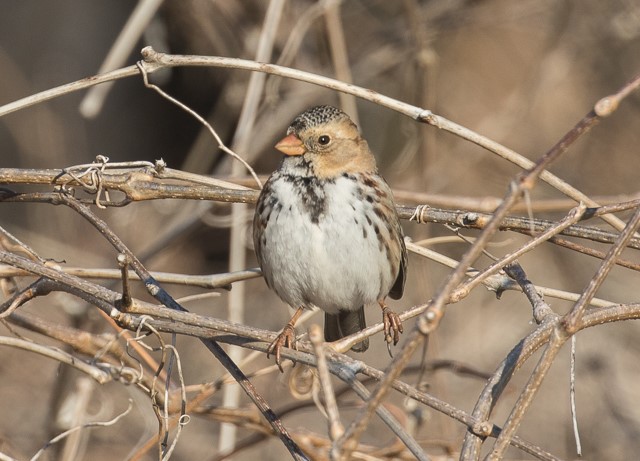
Some ‘Red’ Fox Sparrows popped up nicely.
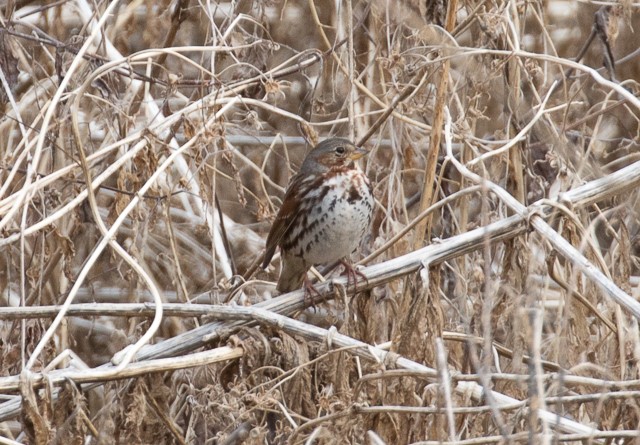
Sandhill Cranes were abundant as we watched at sunset as many of the 600,000 estimated birds came pouring in overhead landing to roost in the safety of the central Platte River. At sunset groups came pouring in drove after drove, still arriving after it was too dark to see. When back at sunrise we heard a cacophony, reminiscent of a screaming crowd in a packed professional athletic stadium. This occurred just
as the cranes took off almost all at once to head out for the day’s forage. This is truly an indescribably experience that needs to be experienced to believe!
Droves of Sandhill Cranes pour in at sunset.
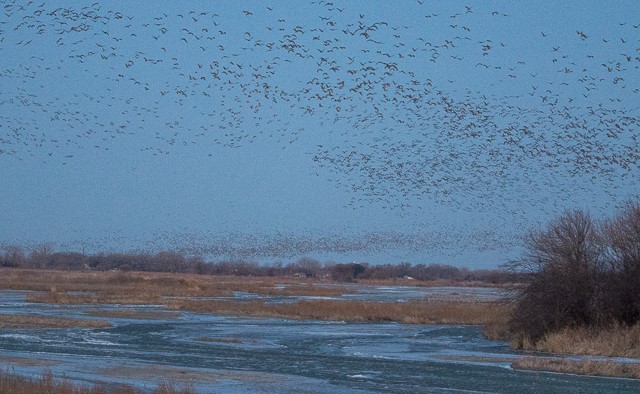

The multi-colored sky over the Platte
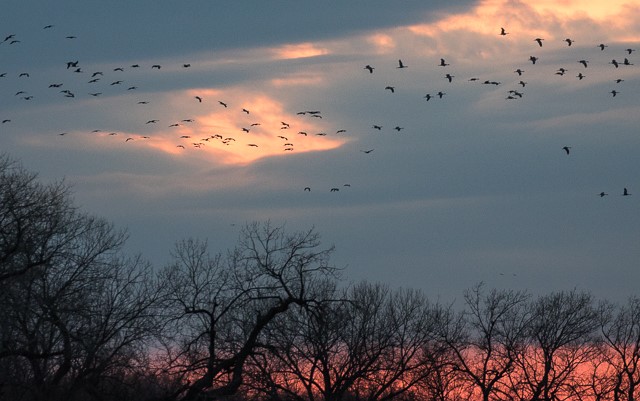
Sandhill Crane flying by in perfect light.
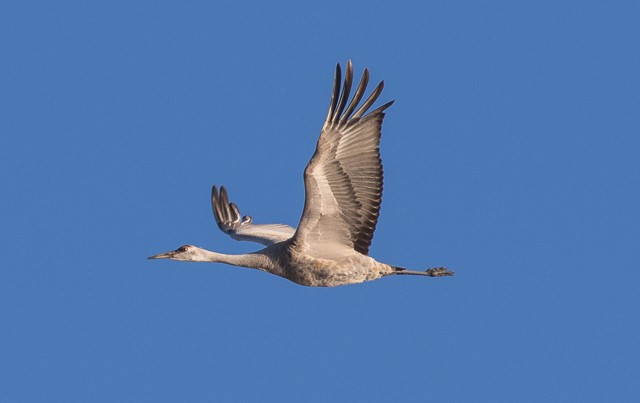
It seemed like an early migration for some species such as American White Pelicans. In the last seven years this species was not detected, being too early in the year for its normal arrival. This year however was an exception, with pelicans seen multiple days, and quite close at times revealing their breeding ‘knobs’ adorned this time of year.
American White Pelicans were sporting nice knobs.
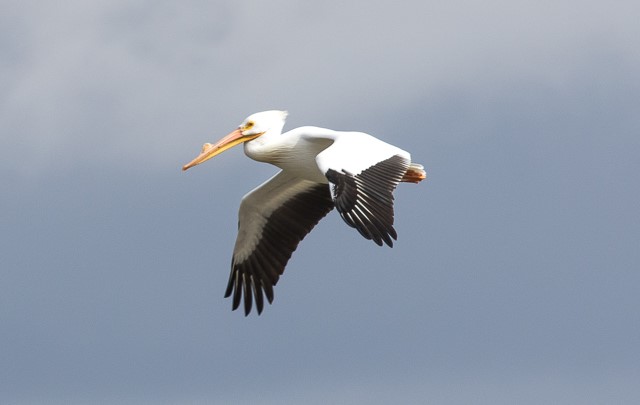
At any point during the trip if there was a loud noise and flocks of birds taking off it was surely a sign that the predominant aerial predator was nearby. Bald Eagles of all ages cruised up and down the Platte regularly looking for any cranes or waterfowl that may not have made it through the night. These massive birds thrive in this area and rely on their opportunistic feeding methods to survive.
Bald Eagles were on the constant lookout for an easy meal.
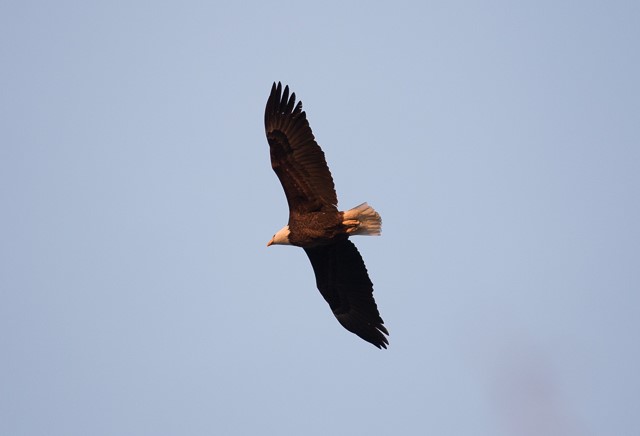
Shorebirds are few and far between on this tour and besides the American Woodcock we saw displaying our first night, a Greater Yellowlegs was the only other wader we came across. It was neat hear it calling from afar and eventually land on the frozen river right in front of us. It must have been cold because it didn’t stay long, eventually taking off to find a warmer place to spend the morning. We weren’t far behind it!
A Greater Yellowlegs on the icy Platte.
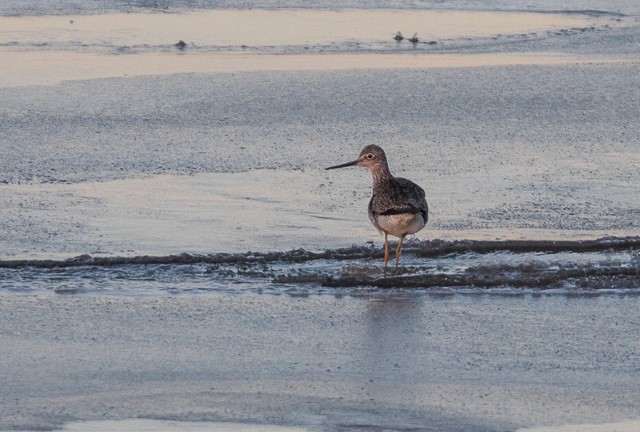
A memorable moonrise over the trees one morning

A Bison at the Crane Trust

March 11:
Jake Mohlmann reports from Hawaii
We just wrapped up an 8-day adventure in the North Pacific on the spring WINGS Hawaii tour. The species count was impressive, with 85 species encountered on the three islands we explored. Each island held its own surprises, from seabirds to those utilizing the native forests.
We were never far from crashing waves and scenic beaches.
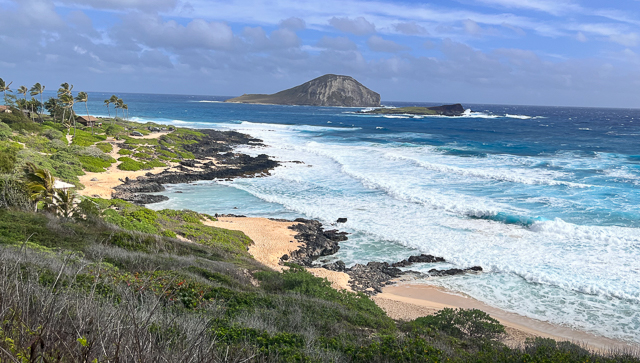
The state of Hawaii is comprised of well over 100 islands, islets, and atolls so perhaps it’s no surprise that seabirds abound on the coastlines. We had a booby sweep with fantastic looks at Brown, Masked, and Red-footed sometimes close enough to touch.
This Red-footed Booby waits near its nest.
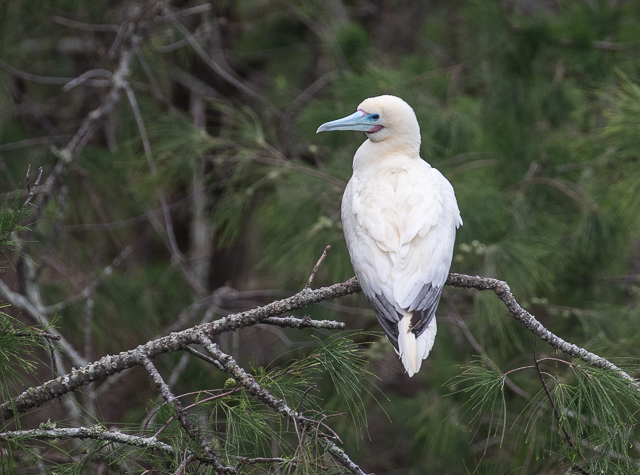
Tropicbirds were also well-represented on multiple islands. We ate lunch next to a breeding colony of Red-tailed Tropicbirds that were performing aerial flight displays with one another, flying backwards in the wind in big loops like a feathered wheel spinning through the sky. It was also memorable to watch White-tailed Tropicbirds fly through the vast expanse of Waimea Canyon with red striated rocks and gushing waterfalls in the background.
Red-tailed Tropicbird during lunch at eye level.
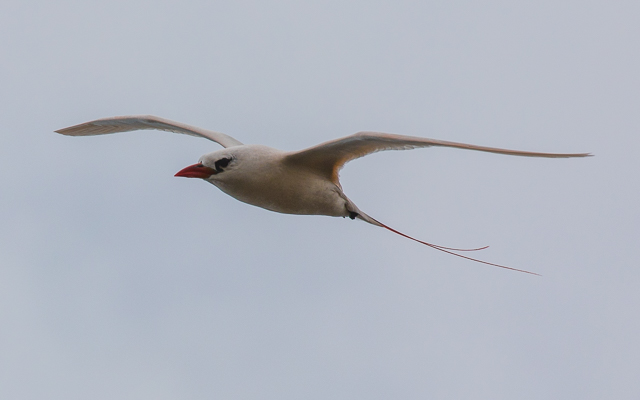
Waimea Canyon’s stunning beauty was apparent.
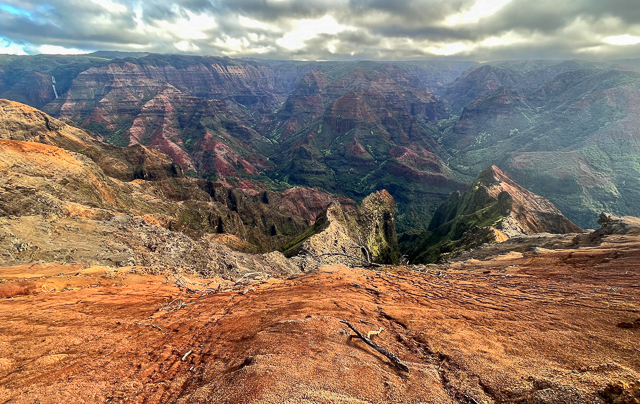
Hawaii is world famous for its breeding colonies of Albatross, including Laysan, Black-footed and even at least one Short-tailed. We were a bit early for the masses, but just in time to see a very young Laysan Albatross sitting perfectly still under the watchful eye of its parent.
The tour’s “cute” award went to this baby Laysan Albatross
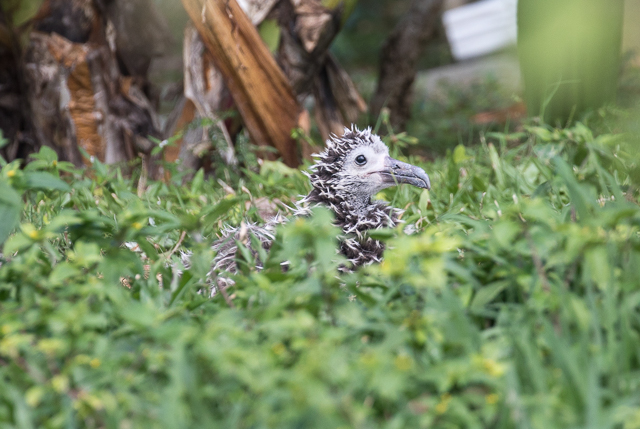
This adult Laysan Albatross kept watch over its chick.
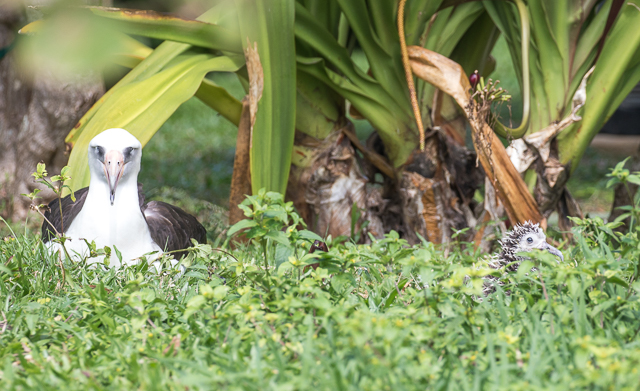
The forest birds in Hawaii are facing extreme challenges every day, from loss of habitat to introduced avian malaria. We focused on each islands endemic species and were able to cross paths with nearly all of them. The group’s favorite place for finding them was hands down in Hakalau Forest National Wildlife Refuge. This refuge protects one of the last remaining stands of montane forest on the big island, and not a place many people get to visit. Soon after exiting our vehicle a begging call brought our attention to an adult Akiapolaau trying to feed its young in the pouring rain. This species is extremely rare and an oddity for its extremely long-decurved upper mandible used for picking tiny insects out of precarious spots. The Hawaiian Creeper did just that, acting like a nuthatch looking over every inch of the tree trunks in search of morsels. Although it exists on multiple islands, we had our best look at the Iiwi, a bright orange flame so spectacular it graces the cover of the bird guide for Hawaii.
The ‘Aki’s’ unique bill was utilized repeatedly for our group.
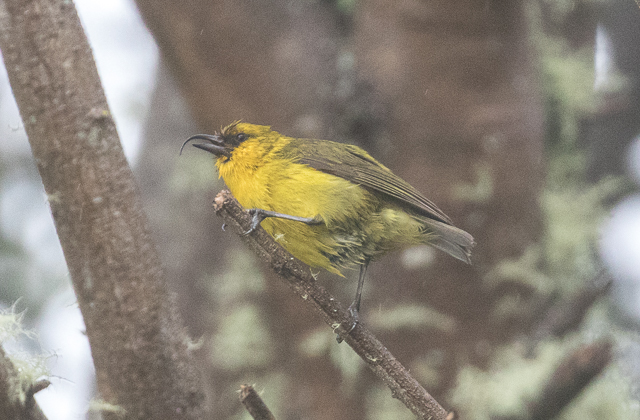
The Hawaiian Creeper very reminiscent of a nuthatch.
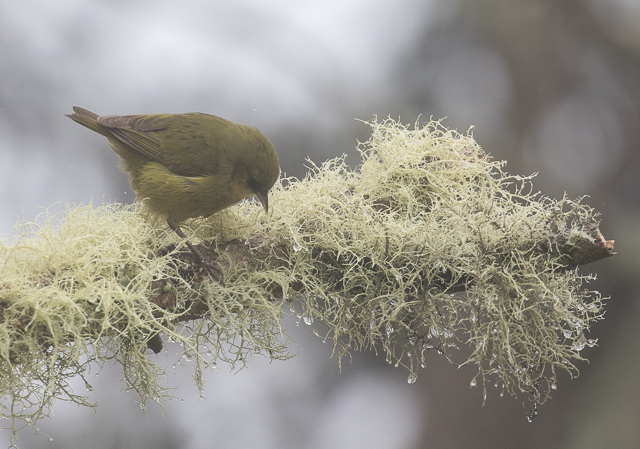
This Iiwi fed on blossoms at eye level.
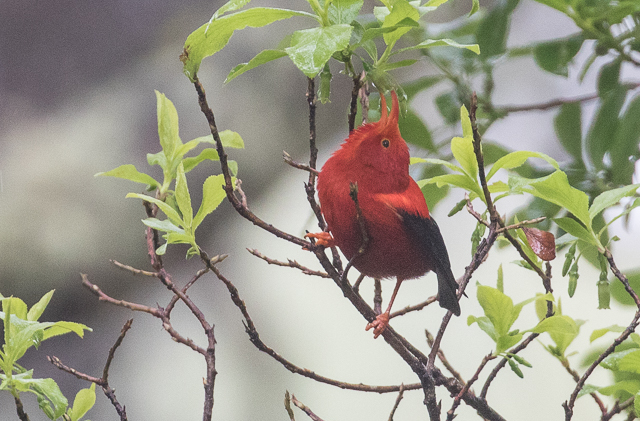
If you’re a fan of raptors you will definitely need to go to Hawaii. There’s exactly one species, the Hawaiian Hawk, endemic to the Big Island. We saw a pair directly overhead slowly swirling in an updraft over the gently rolling hills.
Hawaiian Hawk is the only raptor we saw, but a good one!
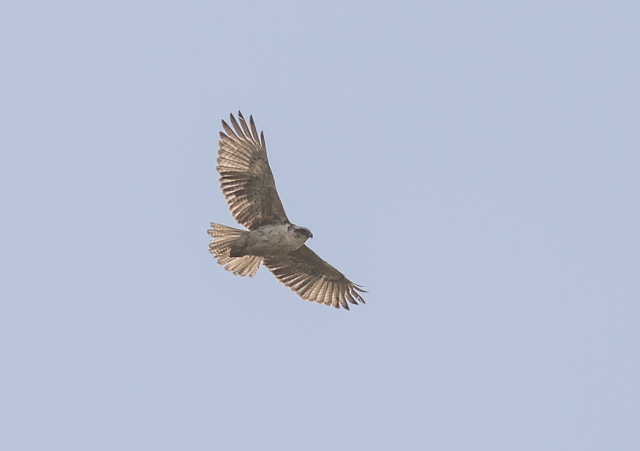
The majority of bird species in Hawaii are introduced birds that have been brought over the last century for various reasons including pest control and simply because they are beautiful. Some of the highlights experienced were multiple species of Munias traveling around in flocks, with Chestnut being our favorite. There aren’t many places one can see three species of cardinal in one trip, but Hawaii is certainly one of them. It was a toss-up between Red Crested and Yellow-billed as to which one took the gold medal for looks. Gamebirds also abound and at any moment a Red Junglefowl or Erckel’s Spurfowl could cross right across the road in front of the van. Our favorite was the male Black Francolin, who we heard several times before finally getting an amazing look of one calling from the top of a mound.
The Chestnut Munias fed in roving flocks.
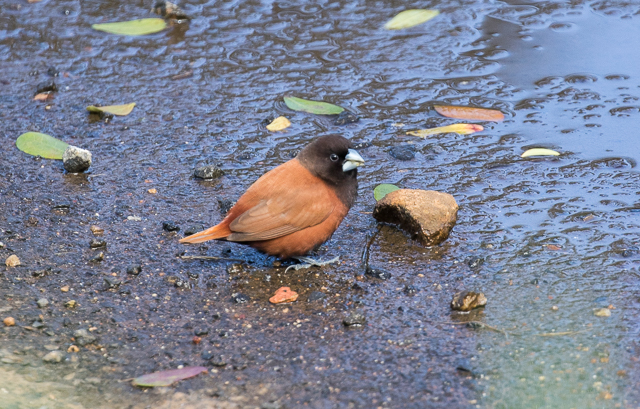
Yellow-billed Cardinal perched up nicely.
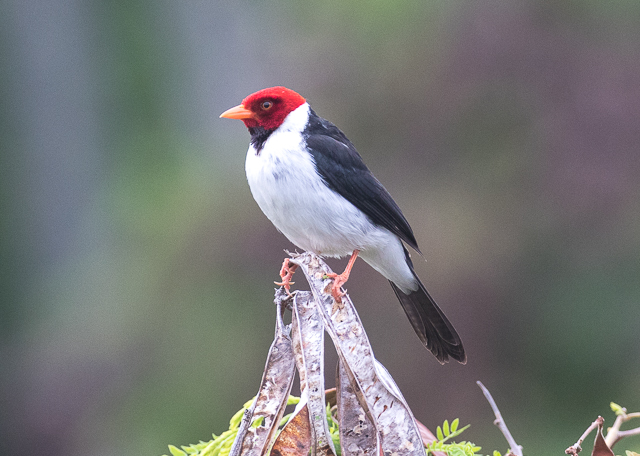
This male Black Francolin called loudly one morning.
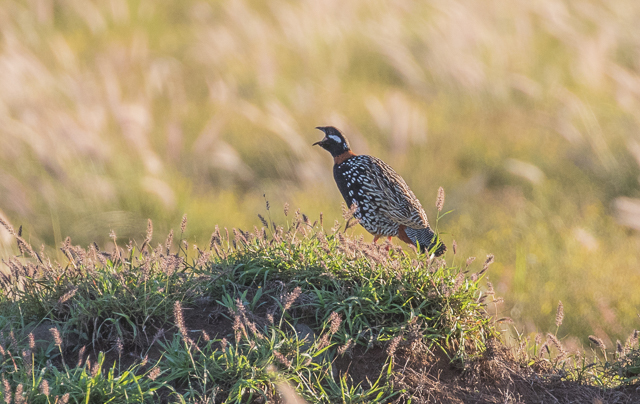
March 7:
Steve Howell Reports from Honduras
Steve Howell reports from the conclusion of another great tour to Honduras, a perfect winter getaway to sun and wonderful birding—here lunch under shady trees with a delightful ocean breeze to cool things off.
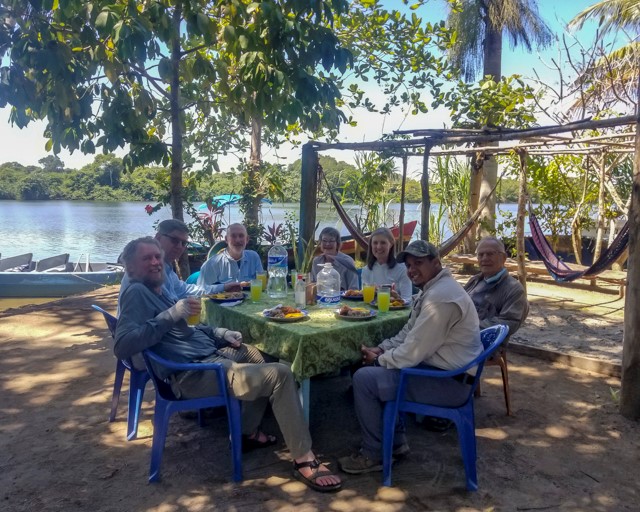
Birds among almost 300 species we found in our short tour ranged from showy Keel-billed Toucans aka ‘flying bananas’...
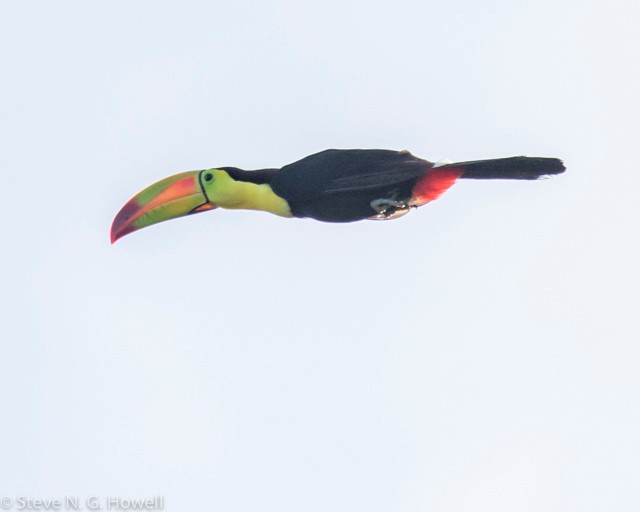
To the poorly known Slate-colored Seedeater, here an easily overlooked immature male.
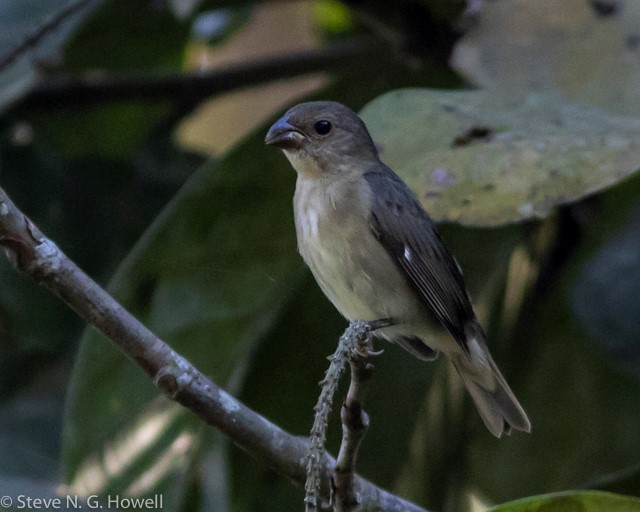
Four species of motmots included the dazzling Turquoise-browed...
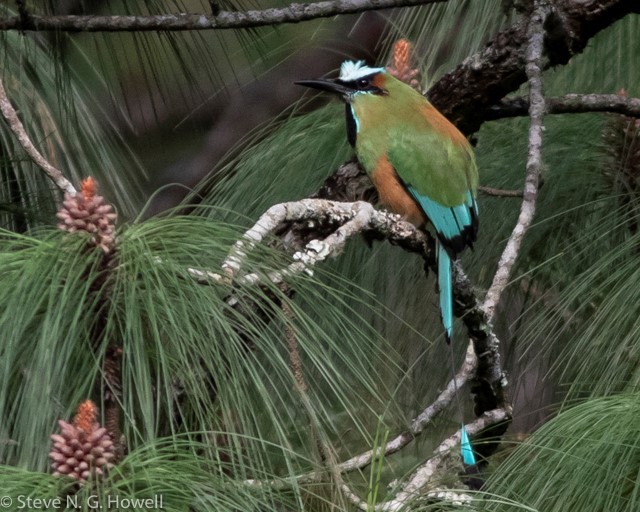
And the retiring little Tody Motmot.
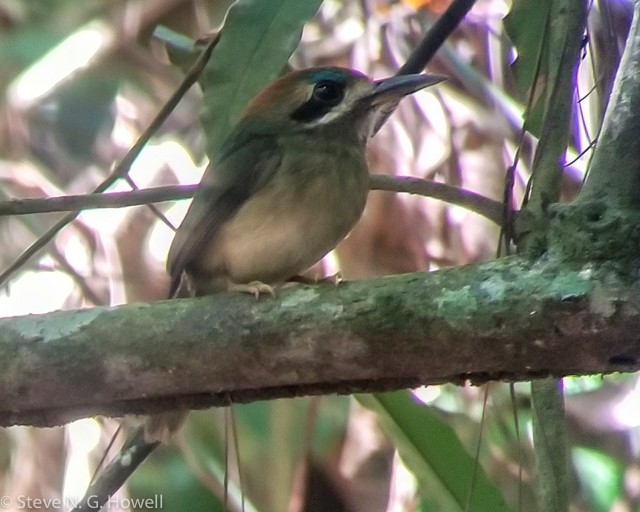
A good diversity of hummingbirds included the very local Green-breasted Mountain-gem.
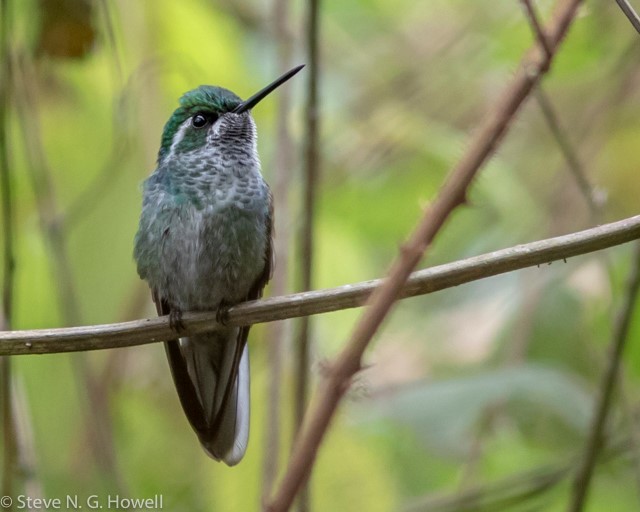
As well as seeing the endemic Honduran Emerald, we studied the endemic ‘Honduran Wren’—a cryptic taxon of Rufous-naped (aka Rufous-backed) Wren that probably should be split as a full species.
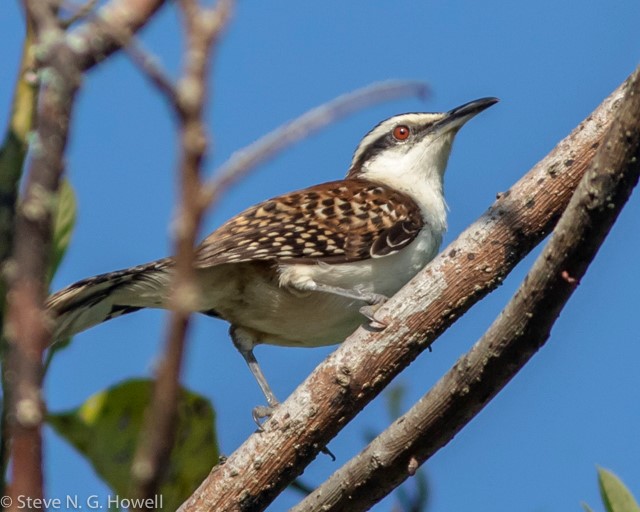
The rarest bird of the trip, however, was this oddball trogon, a presumed hybrid between Collared and Gartered—and its voice was as puzzling as its appearance! Photo by participant Howard Heffler.
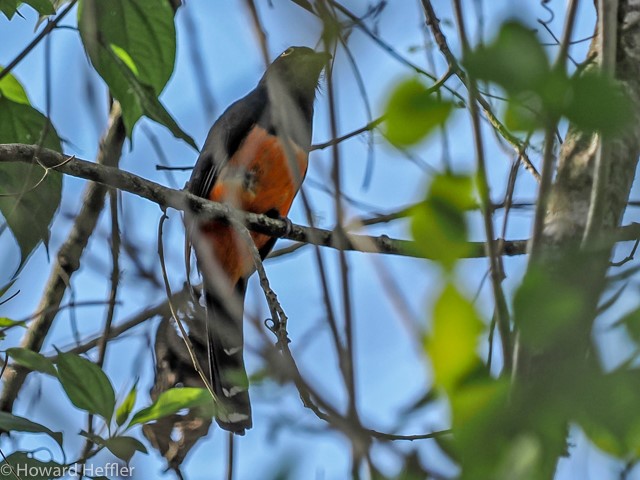
All in all, from Resplendent Quetzals in bromeliad-laden cloud forest...
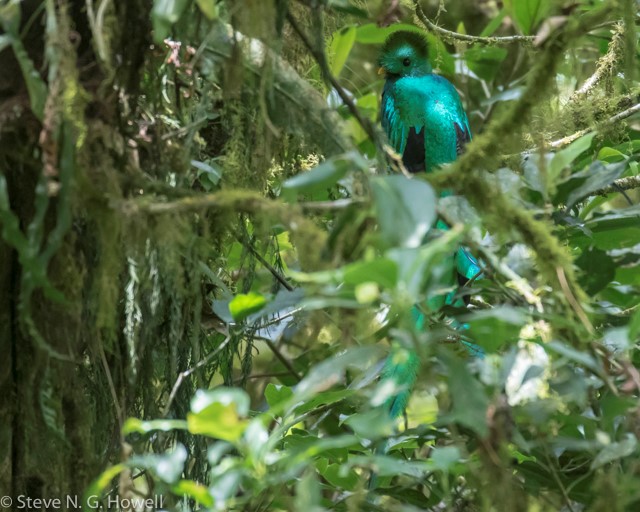
To American Pygmy Kingfishers in quiet coastal backwaters it was a trip of great birds and great memories.
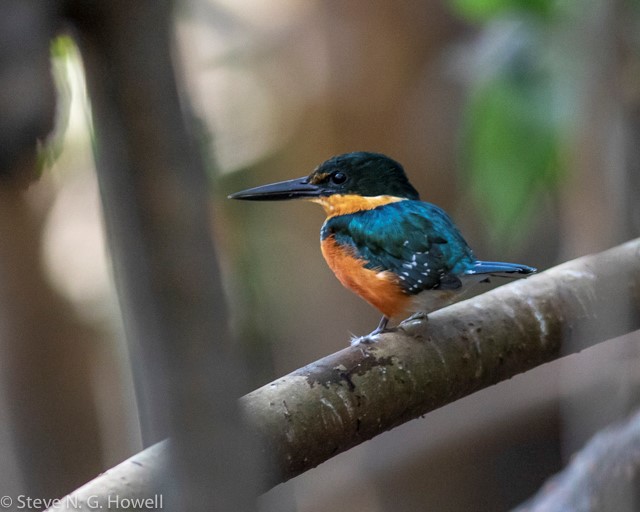
February 23:
Jake Mohlmann reports from South Texas
We had an amazing group of people traveling through the southern tip of Texas this year. This tour highlights Lower Rio Grande Valley specialties, from the ultra-colorful Altamira Orioles seen multiple places, to the just as common Olive Sparrow, regarded on this trip for its subtle beauty and affinity for dense cover. Always a challenge is differentiating the yellow-bellied kingbirds here, specifically the Tropical and Couch’s. Luckily, we had multiple days to compare the two.
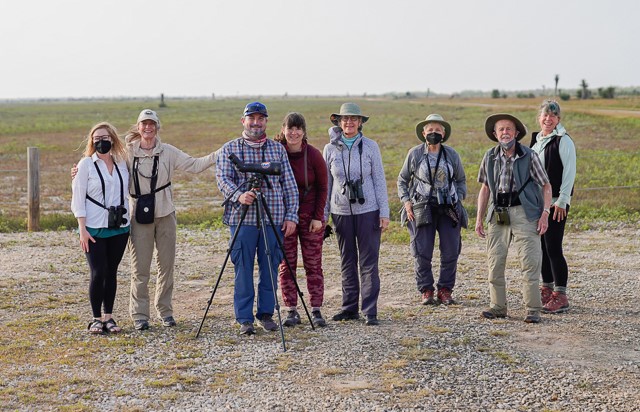
Our group excited at the prospect of finding Aplomado Falcons
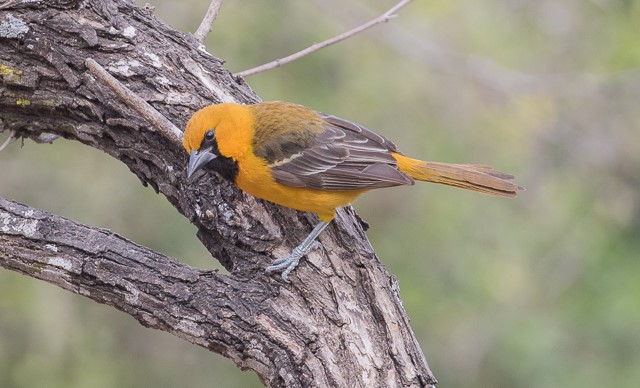
Altamira Oriole - Colorful resident species included Altamira Oriole
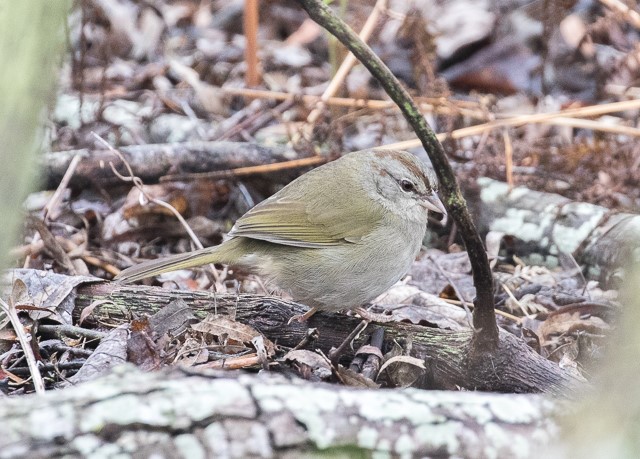
Olive Sparrow - although not as colorful, the Olive Sparrow is normally a lifer.
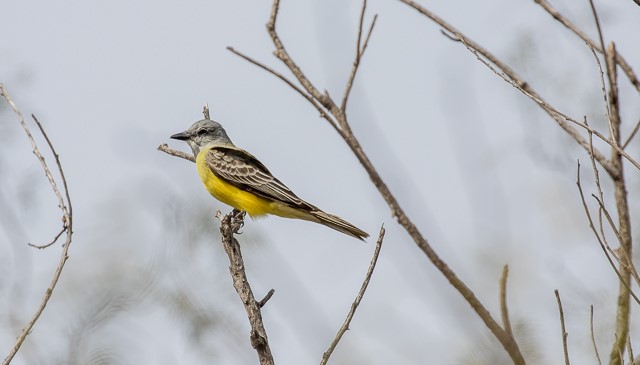
Couch’s Kingbird tends to prefer more wooded areas than look-alike Tropical.
We visited the vast King Ranch to search for some of the Ferruginous Pygmy-Owls that reside there. It didn’t take long to hear the monotonous toot of one of these birds echoing through the live oak forest. We tracked down the call to reveal one of North American’s smallest owls, and certainly one of the hardest to see in North America.
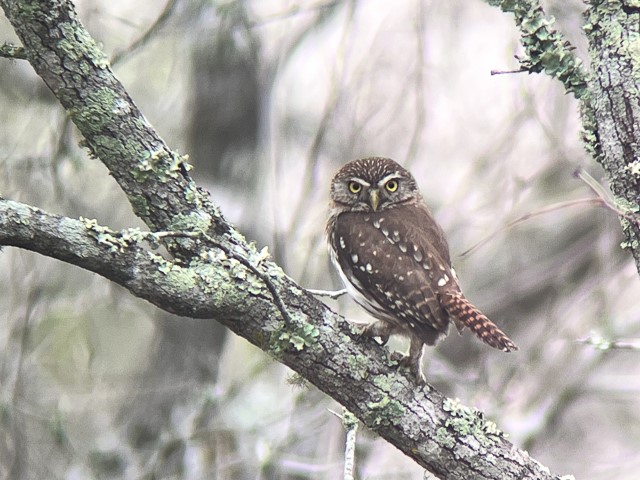
We had great views of a bold Ferruginous Pygmy-Owl
Texas is an area where all three regularly occurring kingfisher species can be seen in a day, sometimes even at the same location. We saw a pair of Ringed Kingfishers working the Rio Grande from shore to shore. One of them slammed down into the river and came up with a fish longer than the length of the entire bird. It perched across from us and slammed the fish into oblivion before eventually swallowing it whole. Belted Kingfishers joined us on our boat trip out of Rockport regularly perching on whatever was available. Perhaps the favorite kingfisher of all was the tiny and mighty Green. At Estero Llano Grande State Park a confiding individual flew under our feet as we stood on a bridge, perching close by for a flurry of photos.
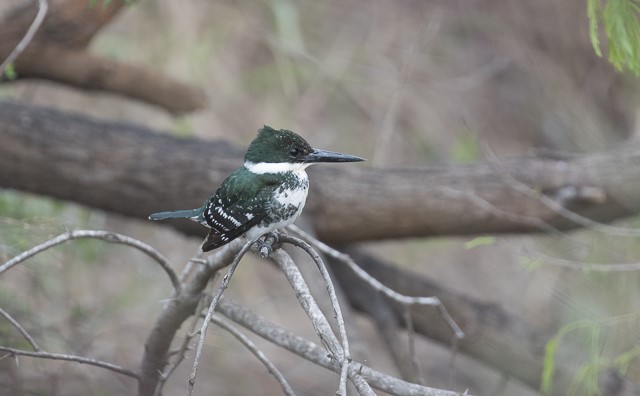
Green Kingfisher - Green is the smallest of our Kingfishers, though most coveted.
Although bright colors tend to dominate any birding scene here, there are other earth-toned species that demand as much respect as their doughty relatives. A perfectly camouflaged Common Pauraque was difficult to spot perfectly placed amongst the fallen brown leaves. There were also Rio Grande varietals of Wild Turkey encountered, performing on the catwalk with slow strutting and tails flared.
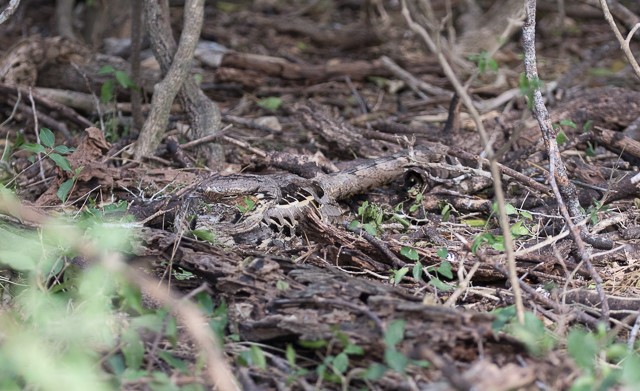
A Common Pauraque hidden in its element
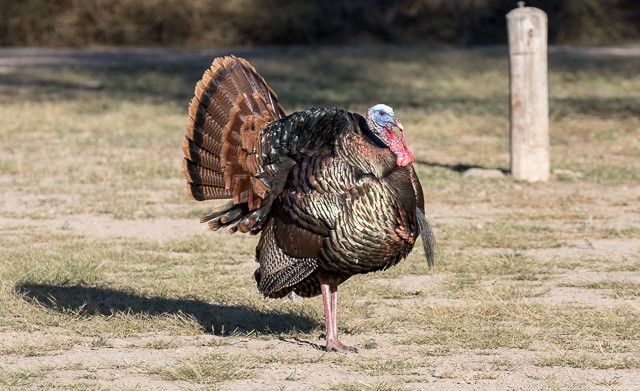
The highly sought after Rio Grande form of Wild Turkey in all its glory.
Whooping Cranes are usually a big reason people come on this trip, and this year did not disappoint. We got right next to a family group comprised of two alert adults and a brown youngster. They foraged together through the shallow estuaries searching for their favorite food blue crab. When the pond was thoroughly probed the youngster gave a call implying they should head to another foraging area. The family then ran into the sky against the waning sunlight.
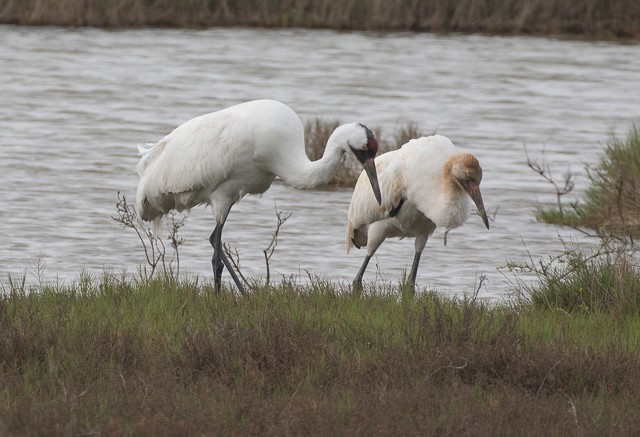
An adult Whooping Crane feeds alongside its chick of the year.
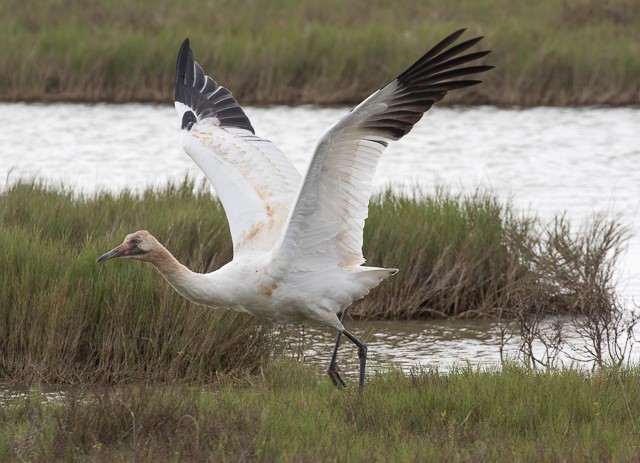
A juvenile Whooping Crane takes flight at Aransas NWR
Texas has a lot of water and as a result birds associating with this habitat abound. American White Pelicans were found from the most remote inland ephemeral pond, to the much more fertile coastline. Feeding right along them were the staggeringly beautiful Roseate Spoonbill, at times at very close range.
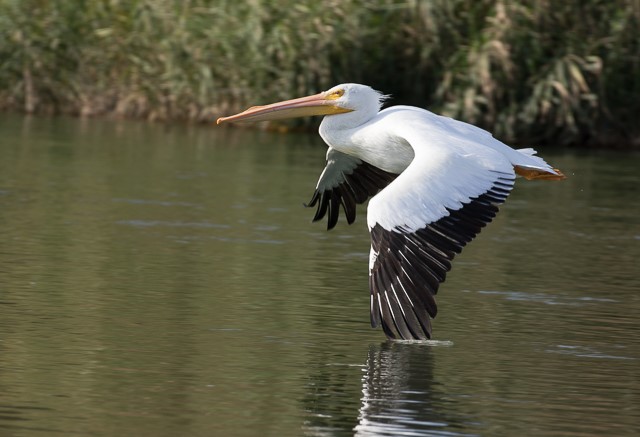
American White Pelican heading down the Rio Grande.
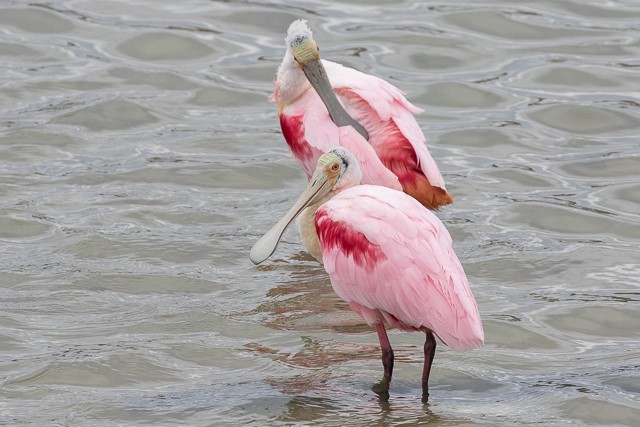
The stunning Roseate Spoonbill seen at close range.
By far the rarest water bird we encountered was the Great White Heron, a rare pale morph of the Great Blue Heron that normally occurs in Florida and Western Caribbean. Another scene to remember was a Sora, not an uncommon bird under normal circumstances, but rare in the activity we saw it in. A recently diseased White Pelican was riddles with flies, some of which the Sora was plucking from the eye socket of the corpse.
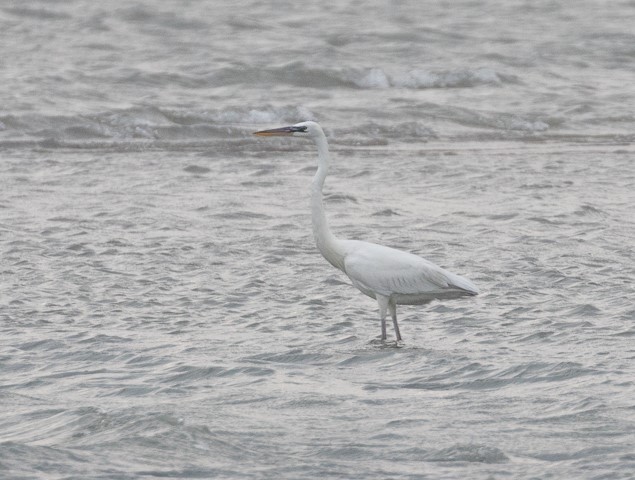
a rare Great White Heron was a complete surprise on our boat trip
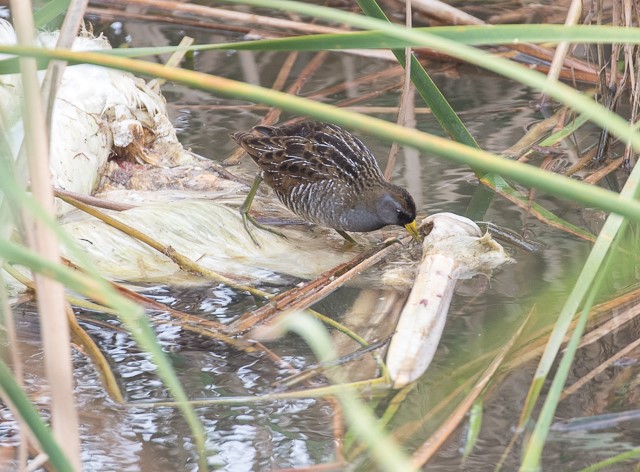
this Sora probed the eye of a diseased pelican for flies
February 22:
Jared Clarke reports from the second Newfoundland 2023 tour.
Our second “Newfoundland in Winter” tour this year was held January 27 – February 2, with three excited birders braving the elements to enjoy some wonderful winter birding. Weather evolved throughout the week, from a mild start to a much colder (and more seasonal) wrap-up – all of which was fun to explore in! Our birding started with a bang – Dovekie and Purple Sandpiper being among the very first bird we spotted at Cape Spear, the most easterly point of land in North America.
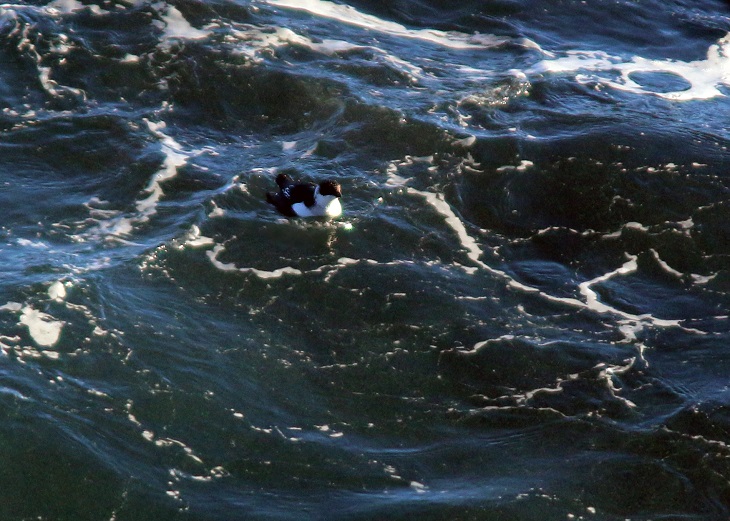
Our luck continued all week with highlights including Willow Ptarmigan and Caribou hiding in plain sight on the tundra...
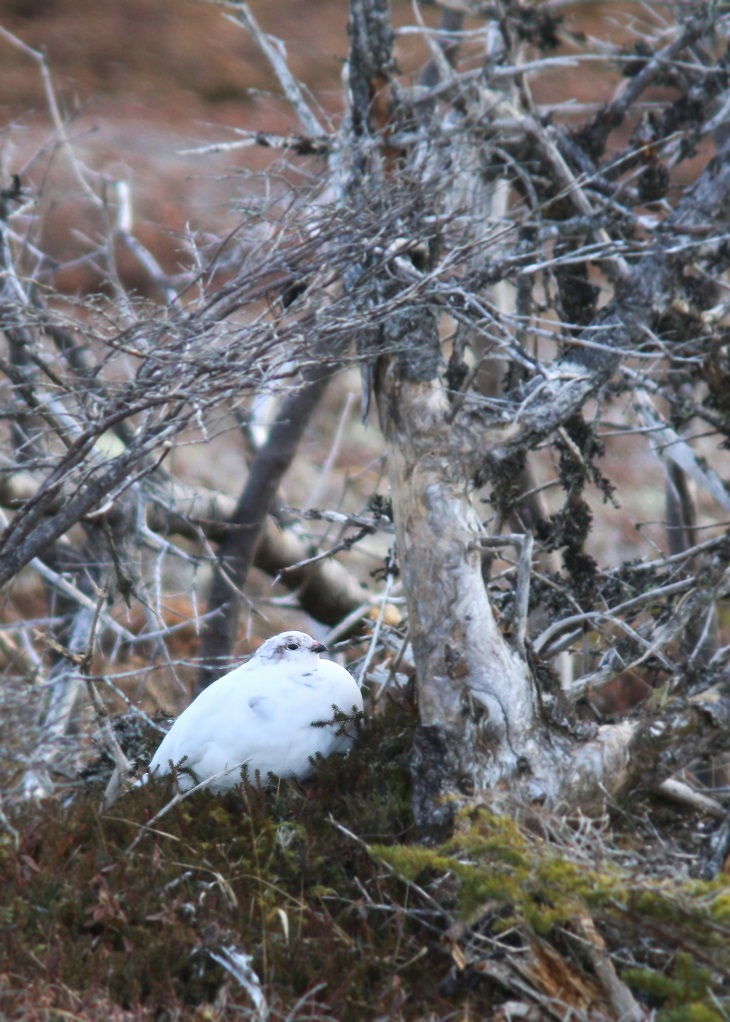
...a Northern Goshawk nabbing lunch over a city park, and Black-headed Gulls on both a quiet pond and the rolling ocean.
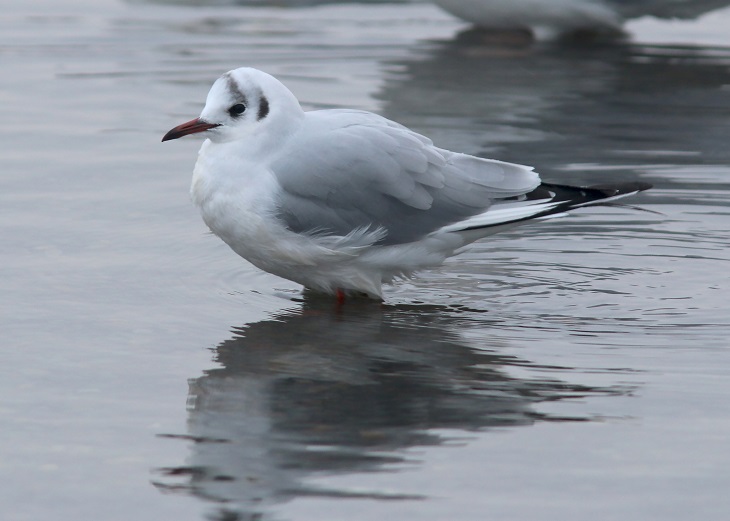
Tufted Ducks and Eurasian Wigeon were enjoyed daily, along with eighteen other species of duck seen during the week.
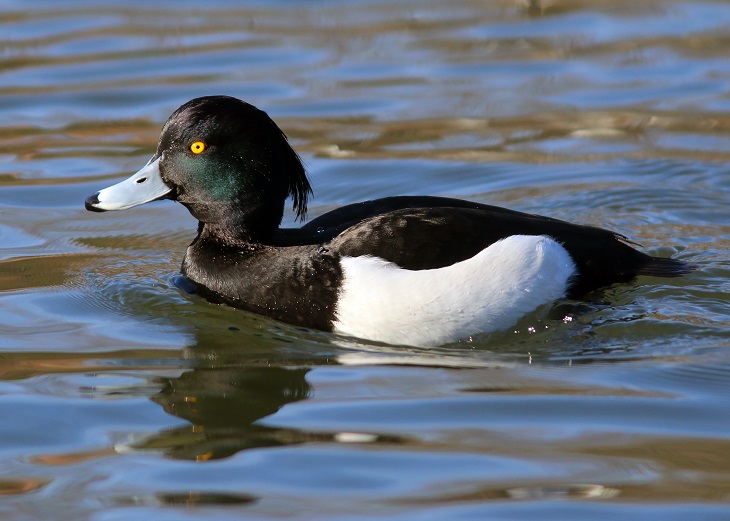
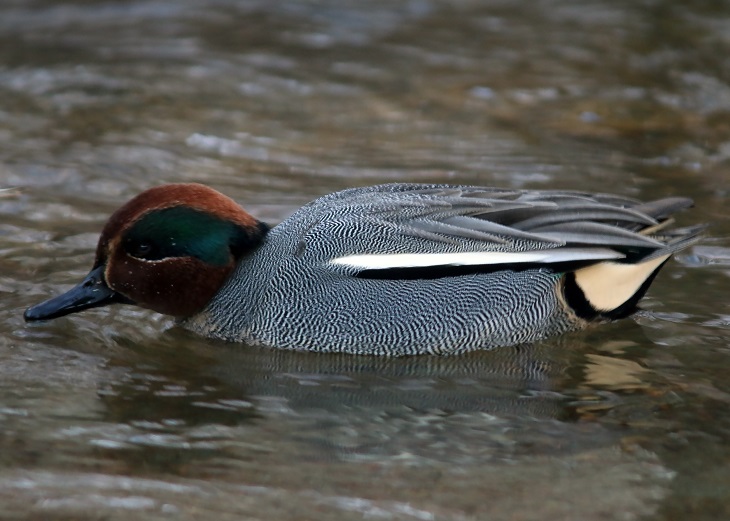
Boreal Chickadees and Canada Jays popped in for visits at the forest edge, and an ABA-rare Pink-footed Goose entertained us with a ridiculously close encounter. It was a fantastic week of winter birding at the edge of the continent!
Harbor Seal
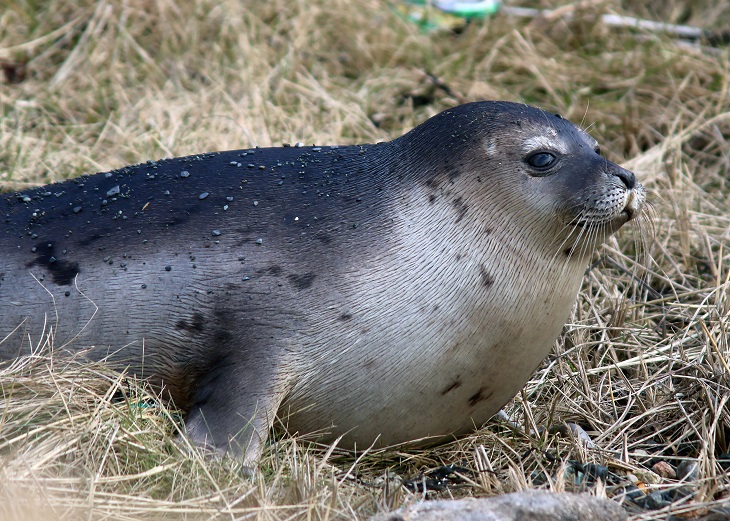
Black Guillemot
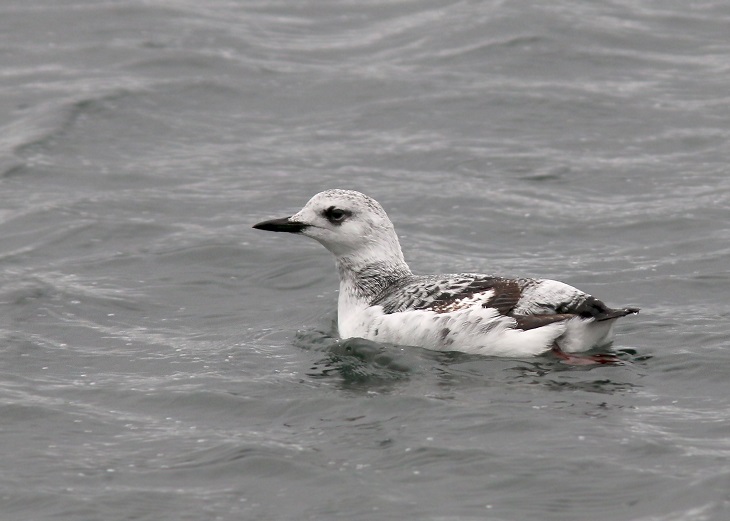
Great Cormorant
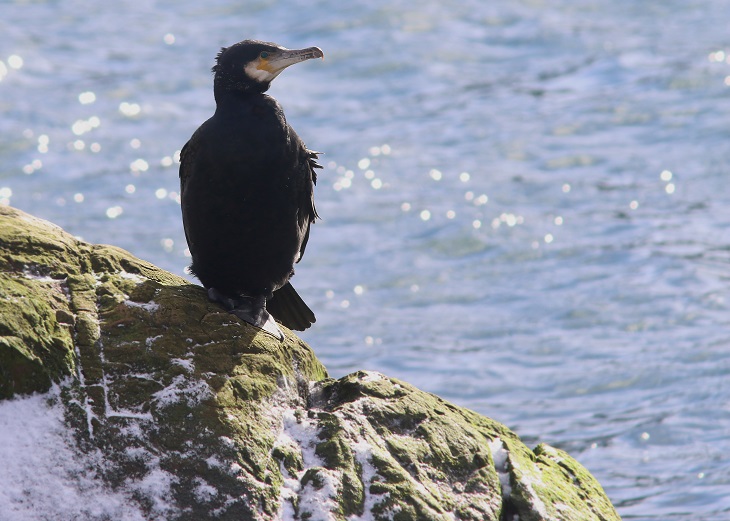
February 14:
Jon Feenstra reports from NW Ecudaor
I'm freshly back from our week in northwest Ecuador, one of the most accessible havens of bird diversity there can be. Here's a pictorial summary of some of the many highlights of our day trips from home base in Mindo.
On our first day we were shocked and pleased by bumping into one of the world’s rarest hummingbirds, the enigmatic and nearly mythical Black-breasted Puffleg – a first for this tour in its nearly twenty year history. We don’t expect the unexpected, but sometimes it just happens.
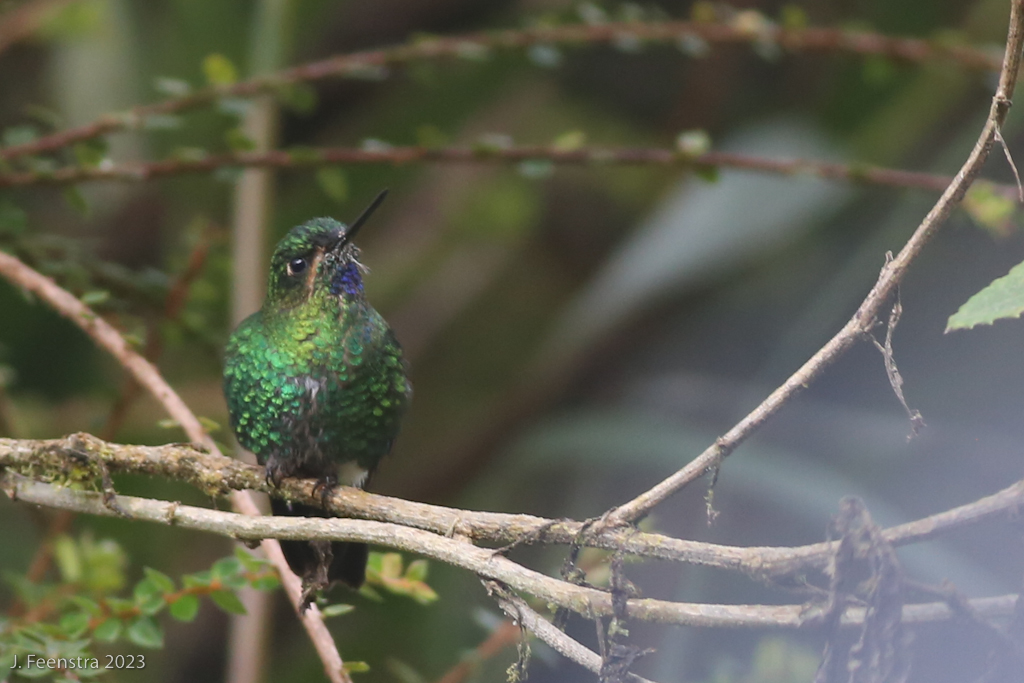
Hummingbirds were a theme of this tour. One of the group favorites was Shining Sunbeam – beautiful, but a real jerk to the other hummers at the feeders.
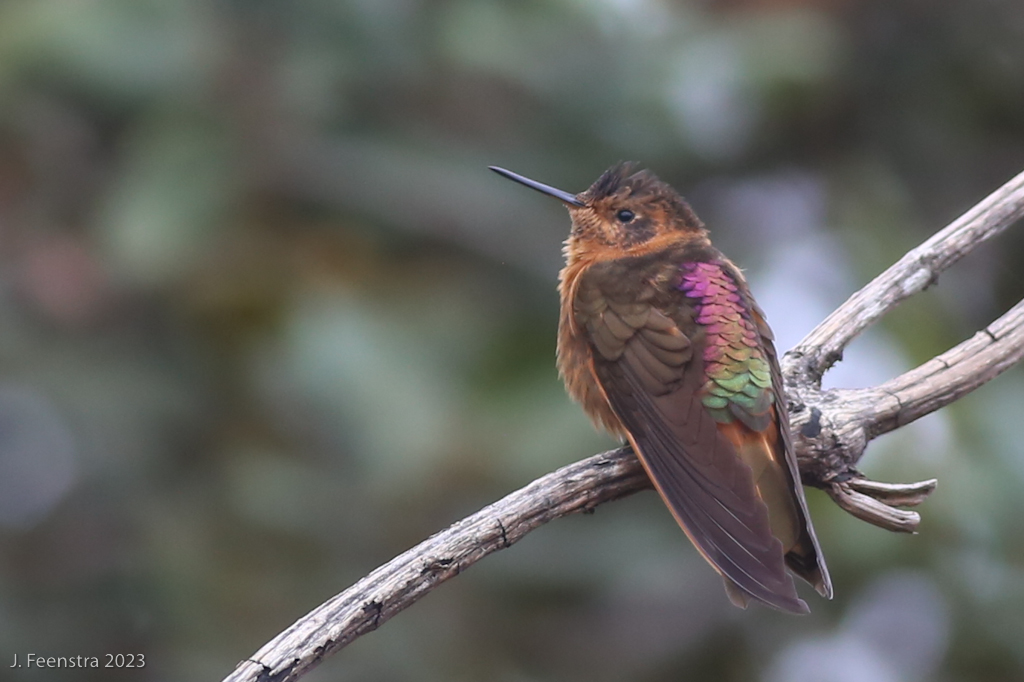
We also visited the reserve run by Angel Paz, the famous Andean farmer turned sneaky-bird taming wizard. He showed us some tough forest birds including the iconic “Maria,” the Giant Antpitta.
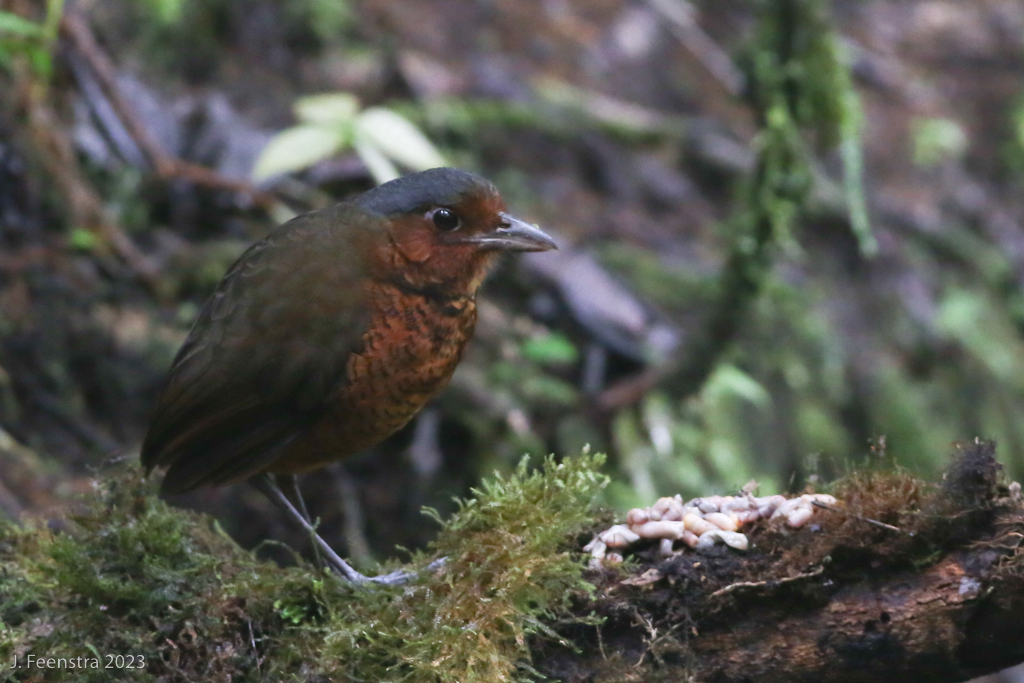
Staying in Mindo gave us access to a number of fancy Choco endemics, birds that only occur in the forests of northwest Ecuador and southwest Colombia. Some were really flashy-looking like this Glistening-green Tanager.
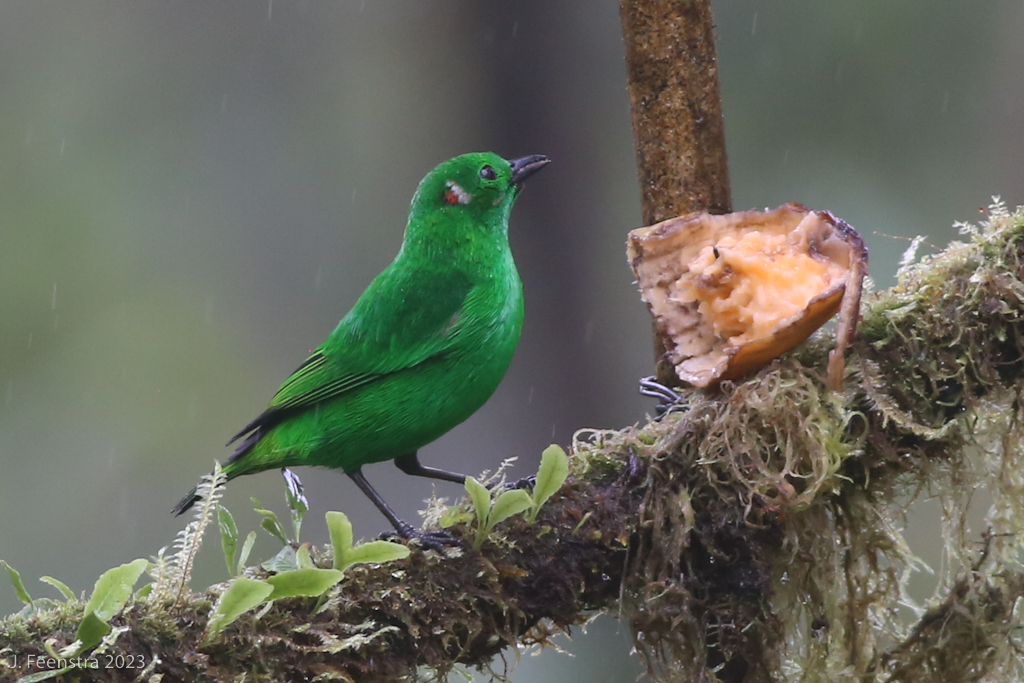
Or this more subtle Moss-backed Tanager…
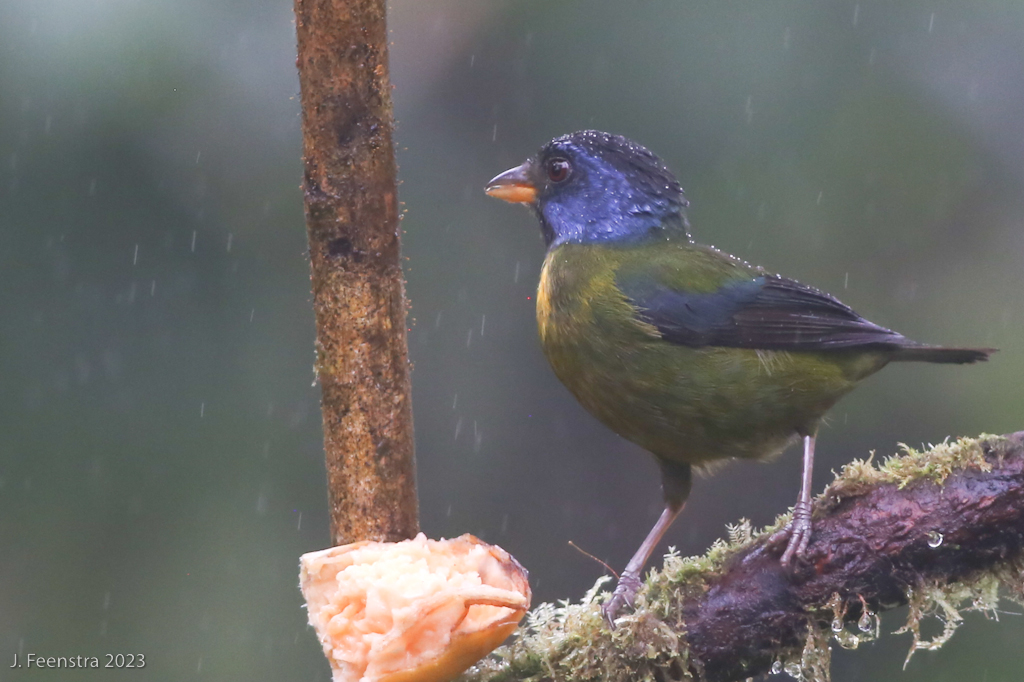
Or the striking Black Solitaire
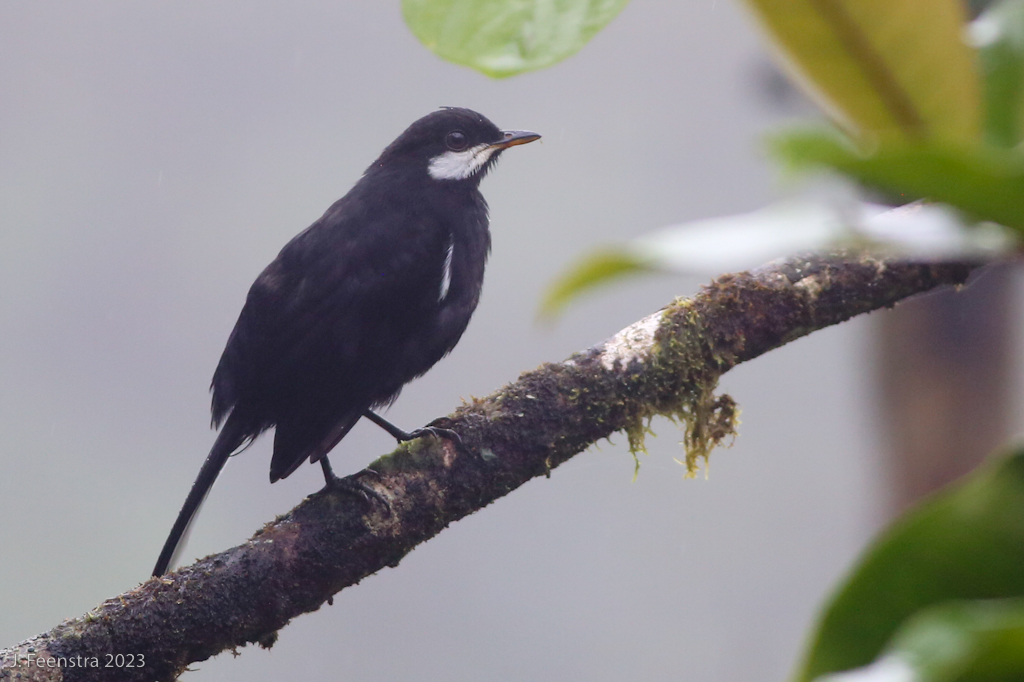
Sometimes the exotic is a little familiar, like the North American vagrant Sora that was poking around the edge of a cloud forest pond.
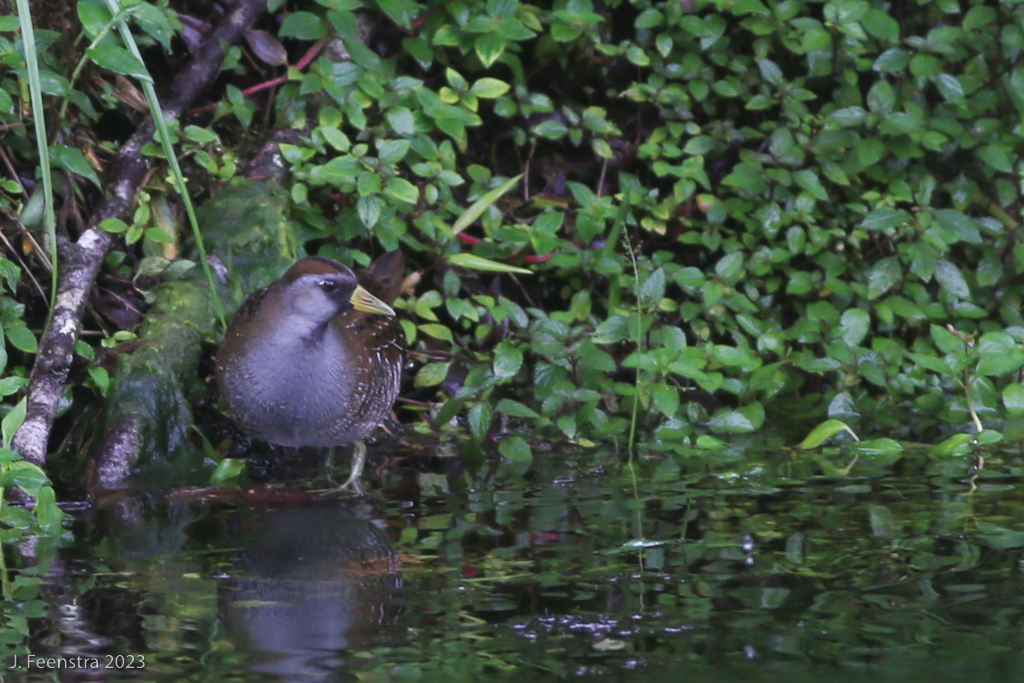
Our day trips meant driving through lots of little Ecuadorian towns. And, driving through little Ecuadorian towns meant ice cream breaks (Magnum bars).

The windy roads around Mindo cross the Equator many times. On our last day, about three hundred species later, we took a break from birding and paused at the monument on The Line to see what all the fuss was about.
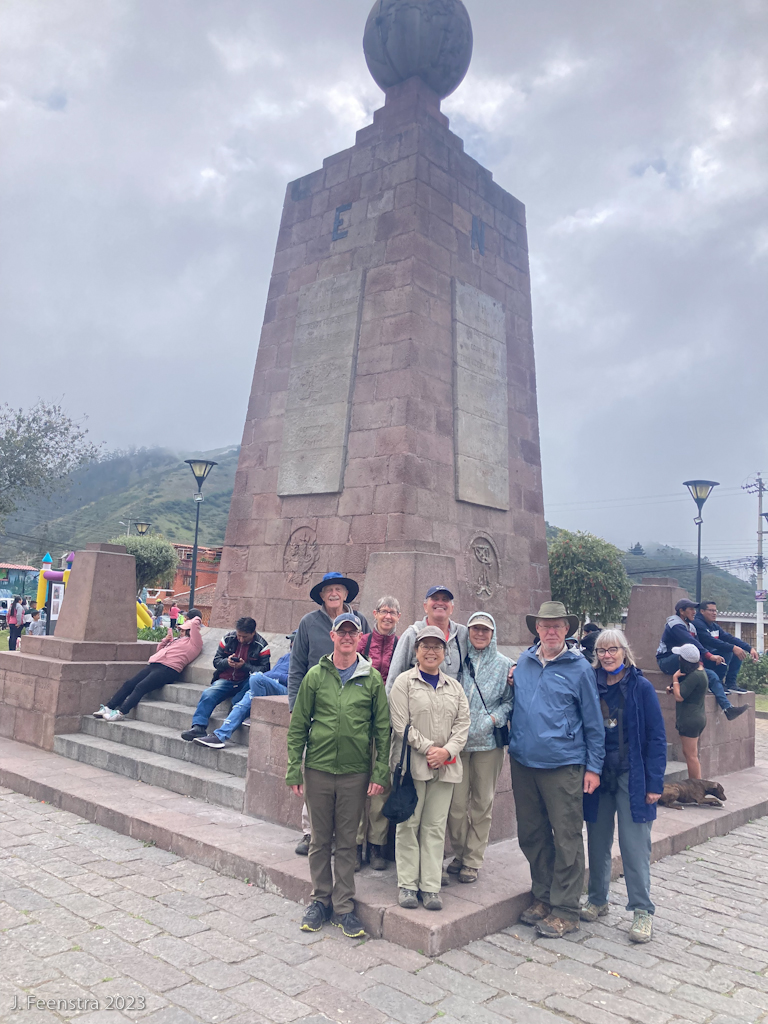
February 8:
Steve Howell reports from the recent Antarctic 2023 cruise.
Steve Howell and Gavin Bieber report from their recent Cape Horn and Antarctica Cruise, an amazing adventure to some remarkable places, here the group with its first view of the Antarctic—the legendary and dramatic Elephant Island, where Shackleton’s crew waited for their heroic rescue.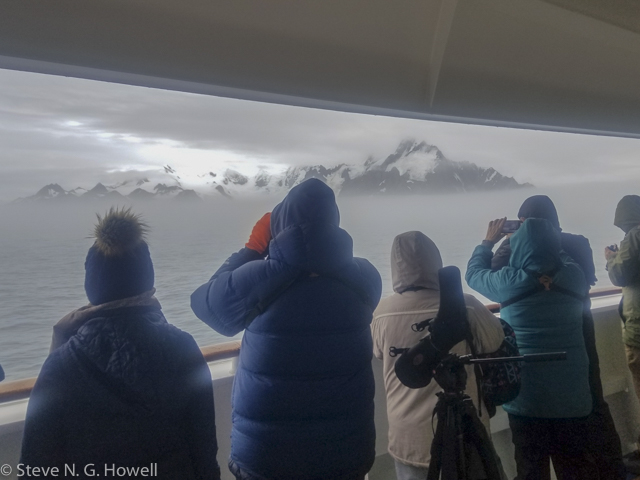
The wide range of oceanic birds exemplified the diversity of marine habitats we traversed, ending off Argentina with the handsome Spectacled Petrel...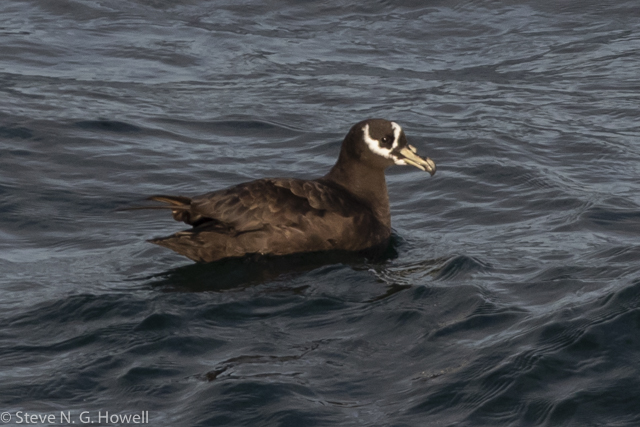
Starting off Chile with Juan Fernandez (right) and Southern Giant-Petrels in gray Humboldt Current waters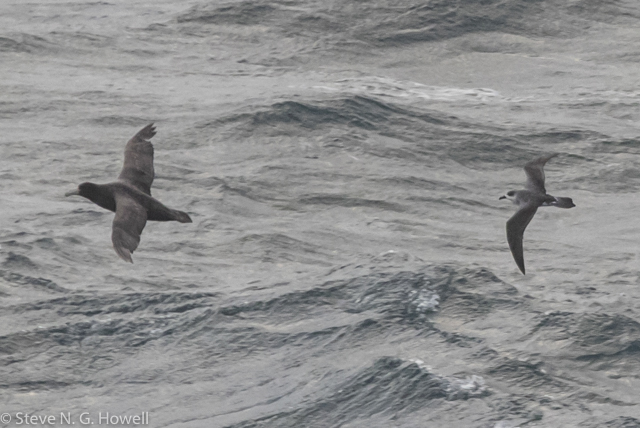
And in between, Soft-plumaged Petrel (bottom) with dapper Pintado Petrels over sunny blue subantarctic waters.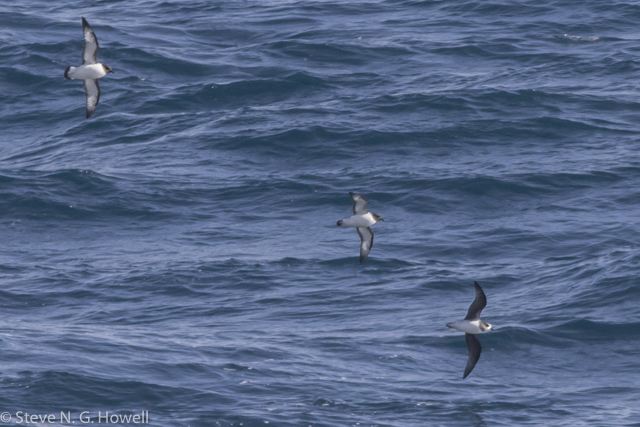
This year’s cruise was exceptional for its views of iconic southern seabirds, such as this Snow Petrel...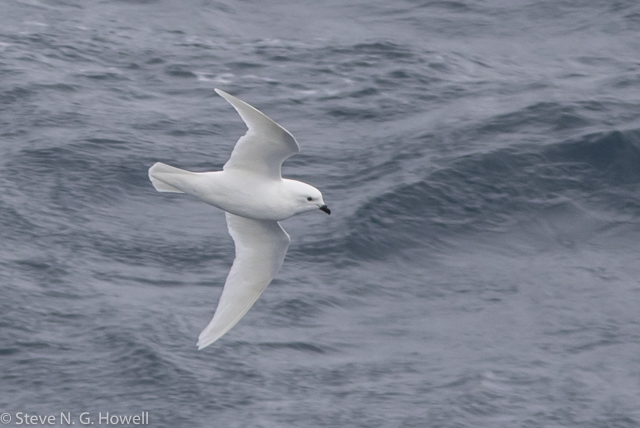
And this Light-mantled Sooty Albatross, which paralleled the ship for 46 minutes!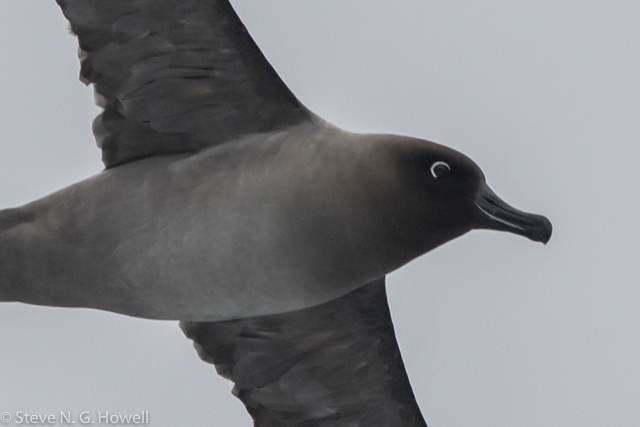
As well as for seabirds both small, like this Black-bellied Storm-Petrel...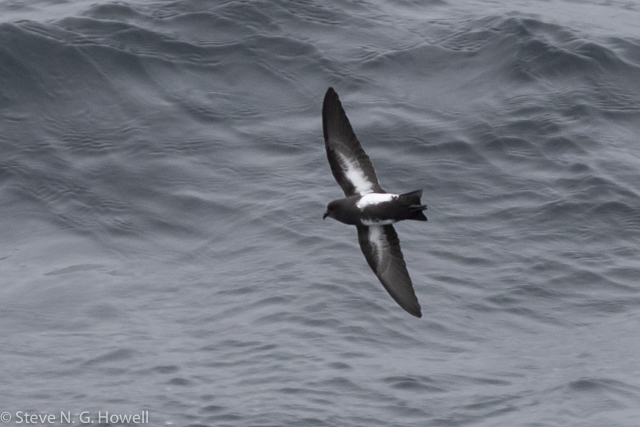
And large, like this Antipodes Wandering Albatross.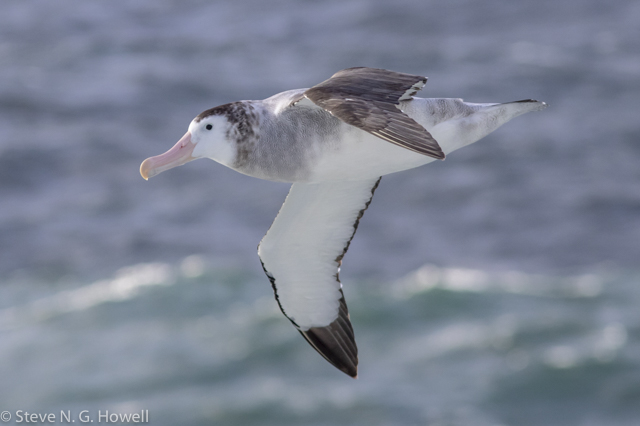
There were plenty of penguins on ice...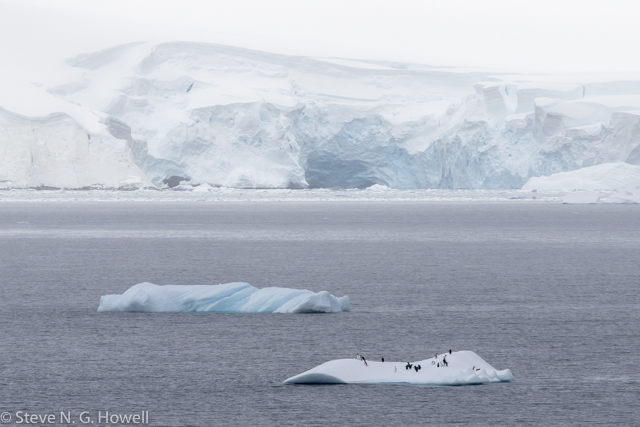
Here a Gentoo leaping aboard!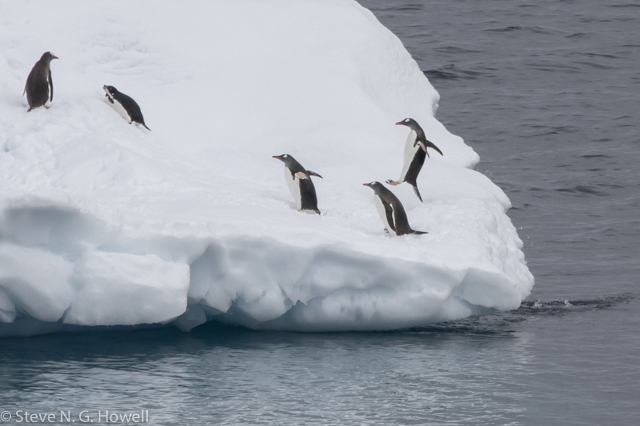
And here a Chinstrap abandoning ship!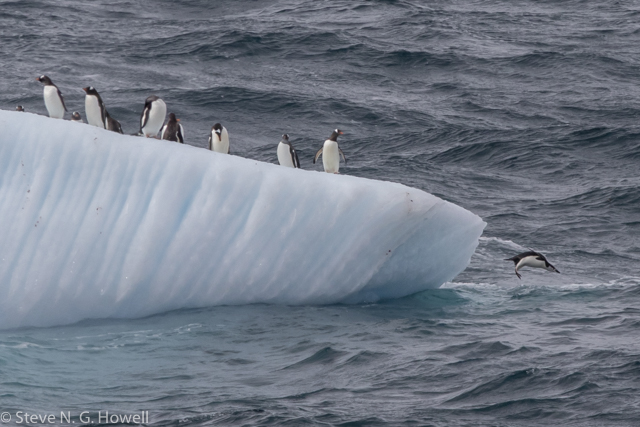
Scenery was, as expected, spectacular...
And the numerous marine mammals tallied included this Sperm Whale.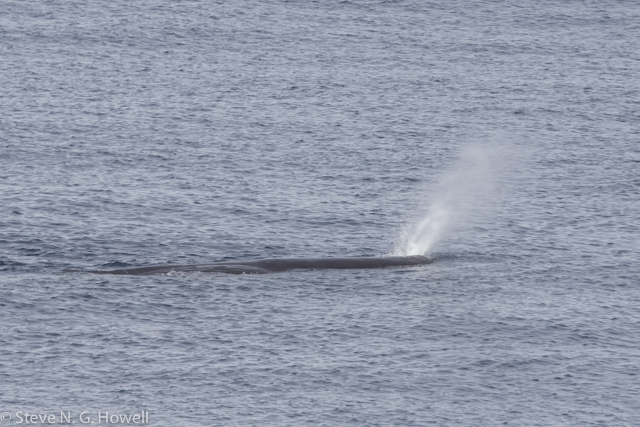
On shore at the Falklands, the many highlights included King Penguins,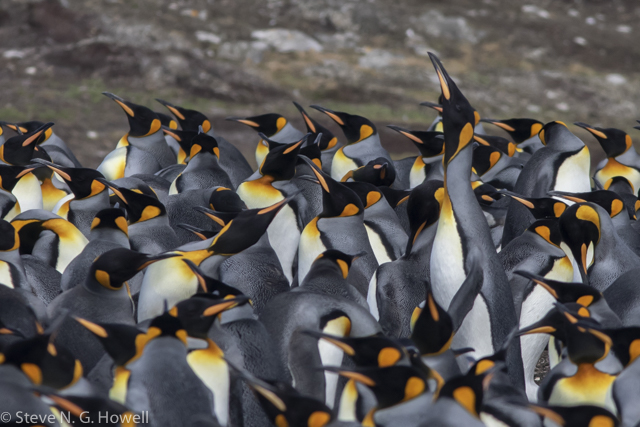
The endemic, flightless Falkland Steamer-Duck,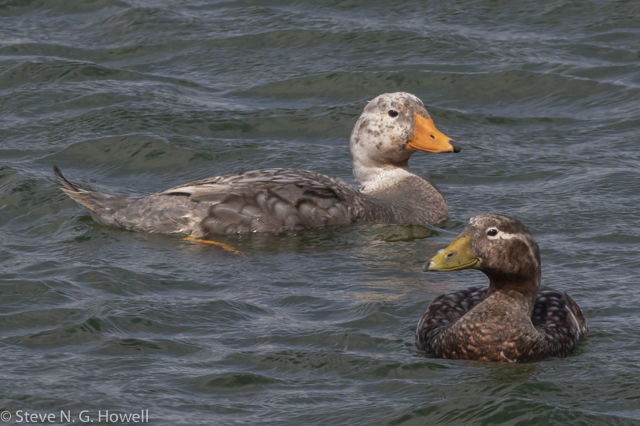
And the handsome endemic population of White-bridled Finch (now a tanager!).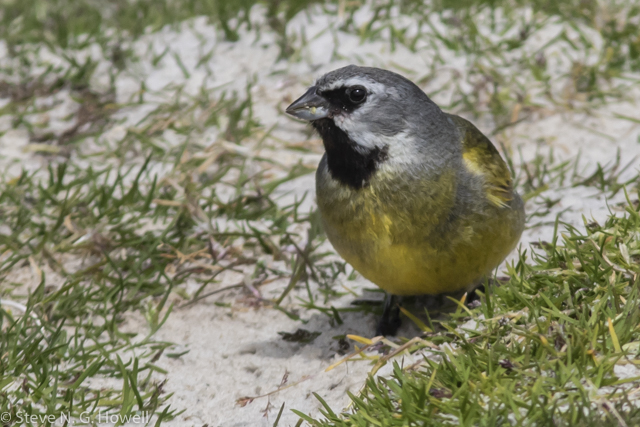
One last look in the wake—with (top to bottom) Northern Giant Petrel, Snowy Wandering Albatross, and Southern Royal Albatross...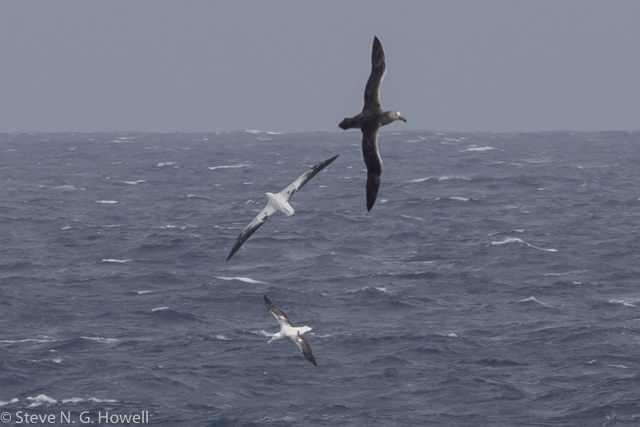
And a happy group partaking of celebratory drinks on the penultimate evening.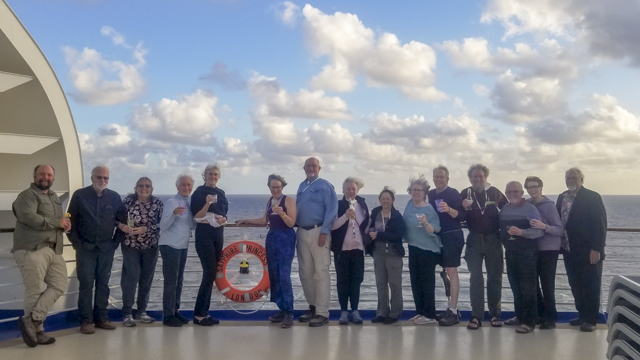
February 6:
Jake Mohlmann reports from Arizona: A Winter Week in the Southeast 2023 tour
We just finished up another Winter Week Tour through southeast Arizona covering 900 miles of everything from highways to dusty 2-tracks. Five distinct zones were covered thoroughly, with several people’s favorite being the scenic Chiricahua Mountains, this year with lots of snow in its upper reaches adding to the natural beauty that this area already boasts.
Our group ready to visit Cave Creek Canyon.
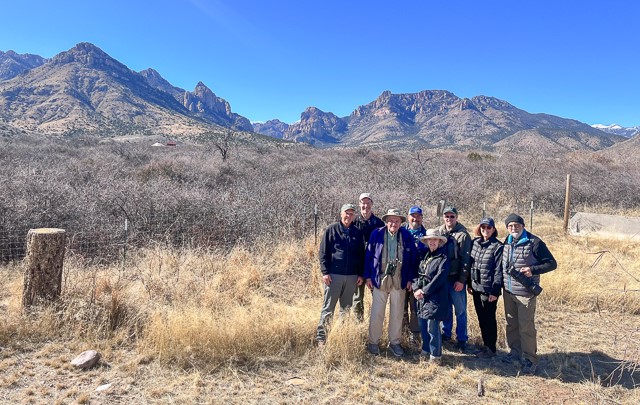
Of course no trip to the ‘Chiris’ would be complete without a drive through the orange and green Cave Creek Canyon. This road shortly leads up into the pine forests and home to one of the most range-restricted birds north of the Mexican Border. With only a couple of hours to devote to finding them, we were elated to finally track some Mexican Chickadees foraging with a roving flock of Bushtits.
The Chiricahua Mountains host Mexican Chickadee, of which we saw 3.
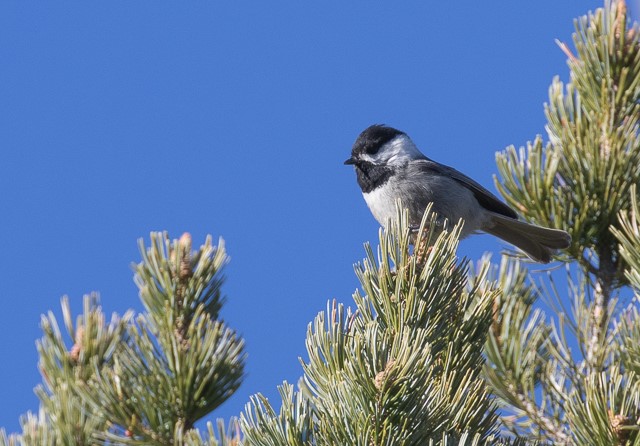
One of the highlights this year was witnessing some of the major finch and thrush irruption happening across the state of Arizona right now. Scads of American Robins have been demolishing anything resembling a berry, right alongside larger than normal numbers of Western Bluebirds and Cedar Waxwings. At Cave Creek Ranch we encountered one of the rarest irruptors this year, when a female Evening Grosbeak came in to gorge on black oil sunflower seeds. At a well-placed fountain south of Tubac we were amazed to have not only a group of Lawrence’s Goldfinches come in to within feet, but also several Red Crossbills showing up to join the photo taking party. Even at our home away from home on the San Pedro River a Townsend’s Solitaire popped in a few times to utilize the opportune oasis.
Evening Grosbeak was added to the overall trip list.
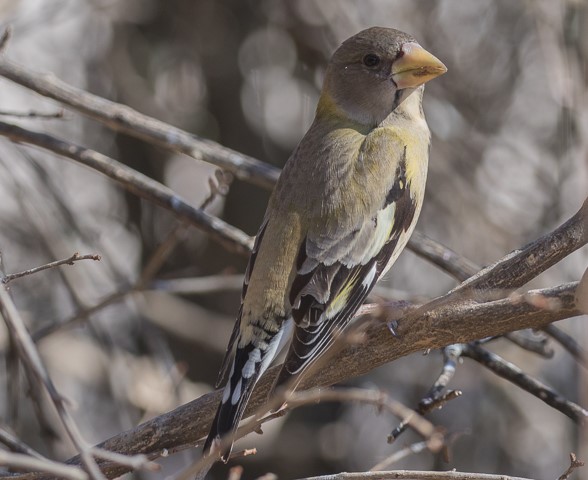
Red Crossbills joined Lawrence’s Goldfinches at arms-length.
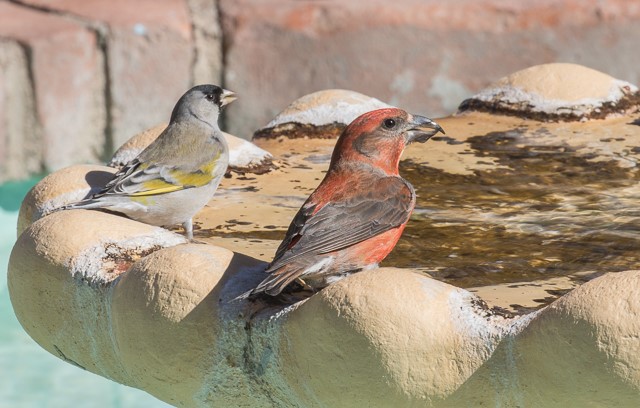
One morning a Townsend’s Solitaire greeted us at breakfast.
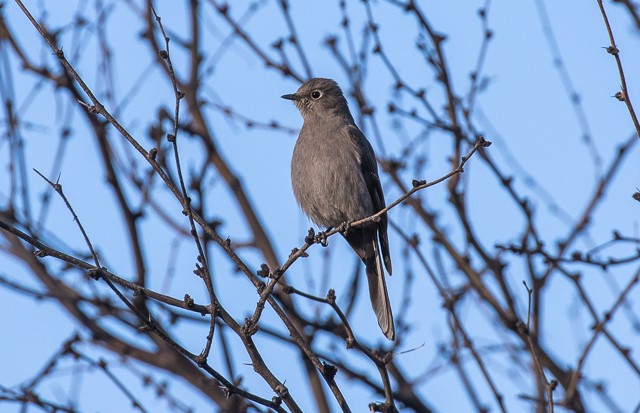
Not only is the San Pedro River a great place to base out of, but it also provides a suite of good birds rarely encounter elsewhere on tour. A particularly confiding Winter Wren was making its wintering home out of a debris pile choking the river near the San Pedro House. We also spent some time in the morning on foot from our lodge to track down the recently split Chihuahuan Meadowlark that resides in the National Conservation area just north of where we stay.
A Winter Wren spending time along the San Pedro River.
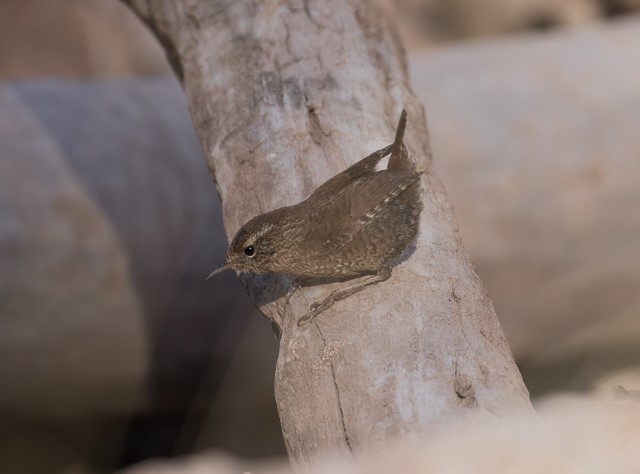
Chihuahuan Meadowlarks were seen multiple days.
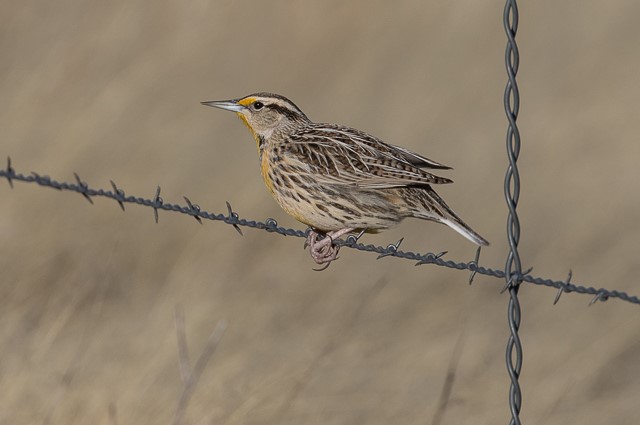
In Madera Canyon the feeders were ripe with regional bird species like Hepatic Tanagers, Arizona Woodpeckers, and Yellow-eyed Juncos. One highlight here was an adult Painted Redstart foraging at eye level working the dead leaves on the dirty ground. The bird repeatedly flashed the white patches on its wings and tail in hopes of getting a specific type of prey to flush, the exact method of foraging this species is famous for.
Painted Redstart foraging at length near Madera Picnic Area.

Perhaps the most confiding bird of the trip came when we went to a park in Patagonia in search of a wintering Williamson’s Sapsucker. It took all of about 2 minutes to find the bird who was sticking close to his beautiful hole excavations in hopes it may attract some insects for easy pickings. He never moved for the 15 minutes we were there.
This male Williamson’s Sapsucker resting at his holes.
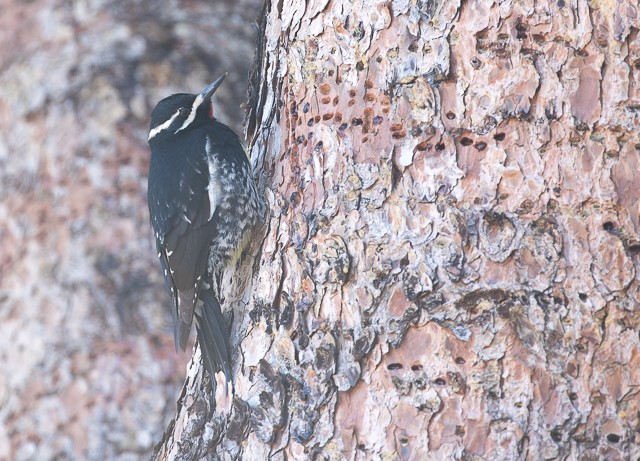
The Sandhill Crane show in the Sulphur Springs Valley is something that needs to be seen to believe. At Whitewater Draw WMA we watched as thousands of gray crane planes came swirling in their family groups and gently touched down right before our eyes. The sky was filled with black peppered crane dots as far as one could see to the north as we sat for hours enjoying the production both visually and auditorily.
A family group of cranes comes in for a landing.
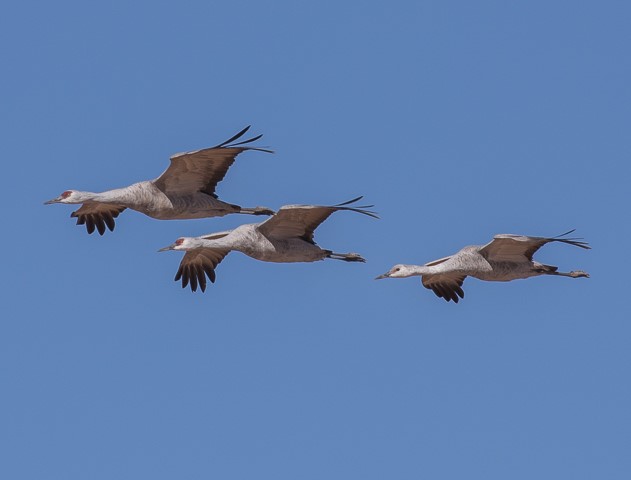
January 26:
Jake Mohlmann reports from Argentina
We just wrapped up another WINGS tour through southern Argentina covering several distinct habitats like the vast wind-swept steppe, southern beech forests, and the dry monte desert.
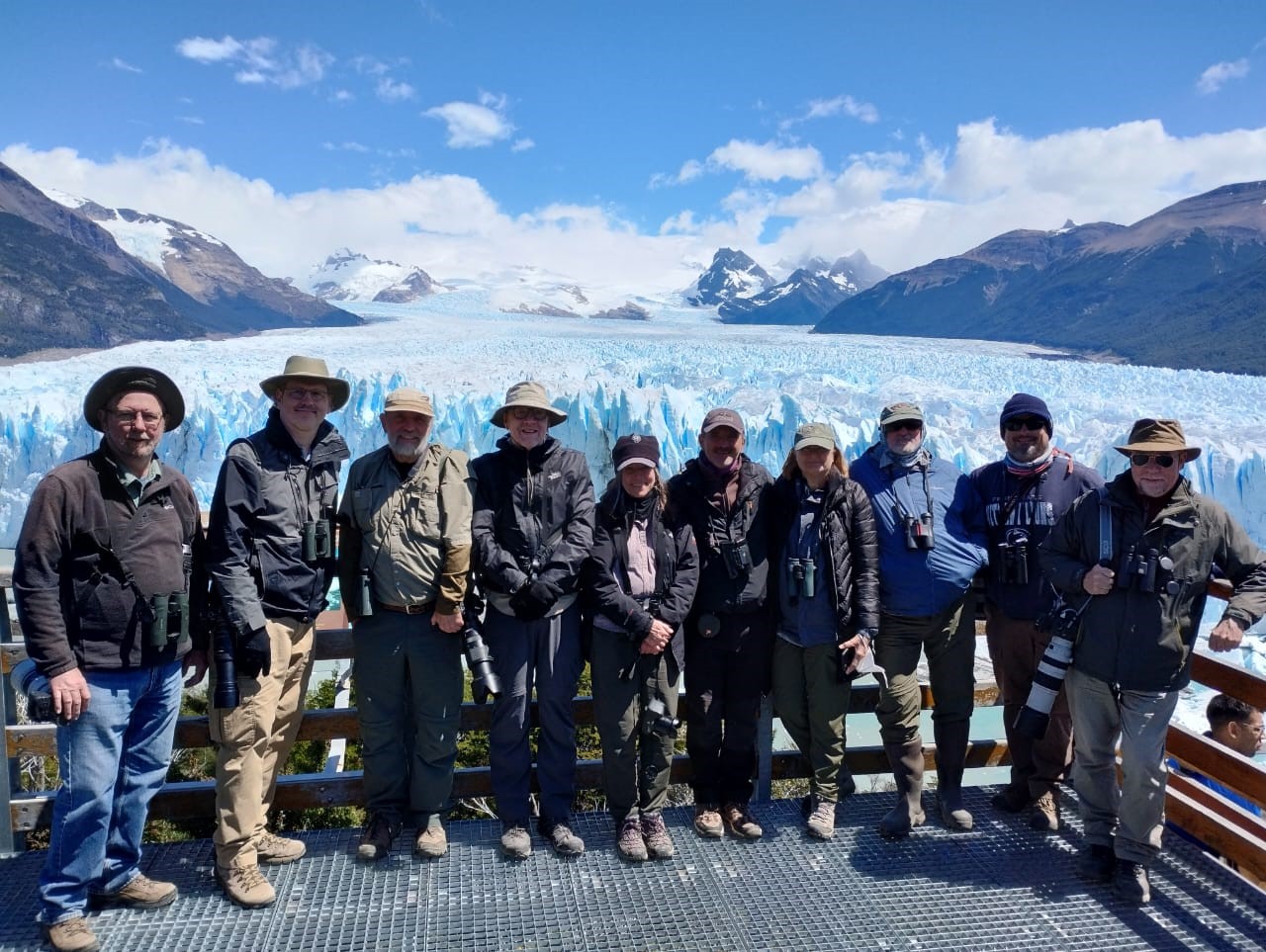
Our excited group in front of the Perito Moreno Glacier in Calafate.
One of the reasons to come to this part of the world is to see the Magellanic Plover, the only member of its unique family resembling a tiny dove pirouetting on wind-swept shorelines. Not only did we have the best views ever of this species in the morning light, we quickly realized the reason we got so close was because of two golf ball-sized chicks running for cover amongst the rocky substrate.
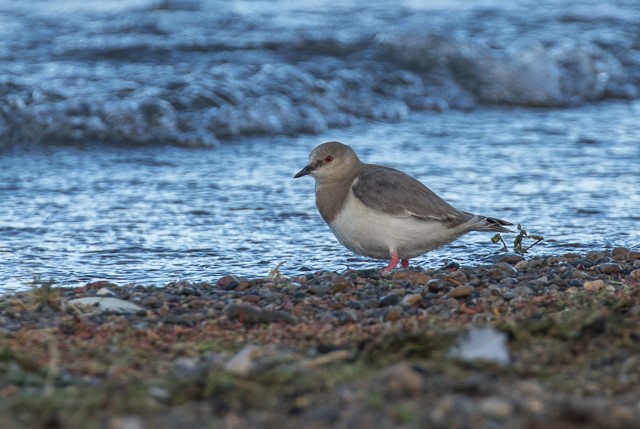
An adult Magellanic Plover with chick nearby.
Waterfowl is a constant presence no matter which habitat we explore, with flocks of some species into the hundreds. Roughly 30 species were encountered on the trip. This year was by far the best year for not only viewing numbers of Spectacled Ducks, but getting extremely close too.
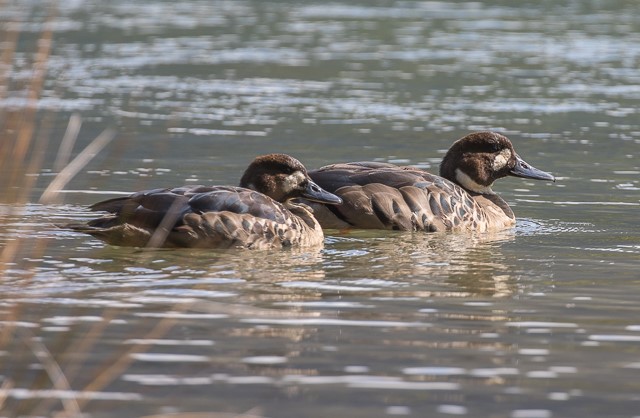
Spectacled Ducks in Tierra del Fuego National Park.
The Nathofagus forests of southern Patagonia host a unique palette of species endemic to this particular habitat. Perhaps the most sought after is the Magellanic Woodpecker, South America’s largest and darn good looking too! We had searched for over half the day for this species in Los Glaciares National Park and just before we were going to throw in the towel, our driver mentioned seeing a pair fly in near where he had parked. Lucky for us they were still in the area and we were able to take endless pictures of both male and female of this coveted creature.
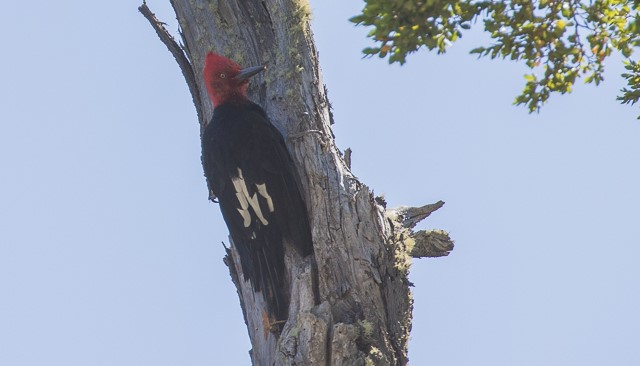
This male Magellanic Woodpecker aflame atop a snag.
Argentina doesn’t boast the numbers of endemic bird species that some South American countries do, but the ones they have are quite special. We were excited to see the endemic White-throated Cacholote, a large member of the furnariid family, defending its well-constructed nest with gusto just outside Puerto Madryn. After walking through a nesting colony of thousands of pairs of penguins, the trail at Punta Tombo led us to the coast where another pair of Argentine endemic White-headed Steamer-Ducks rested on the rocks.
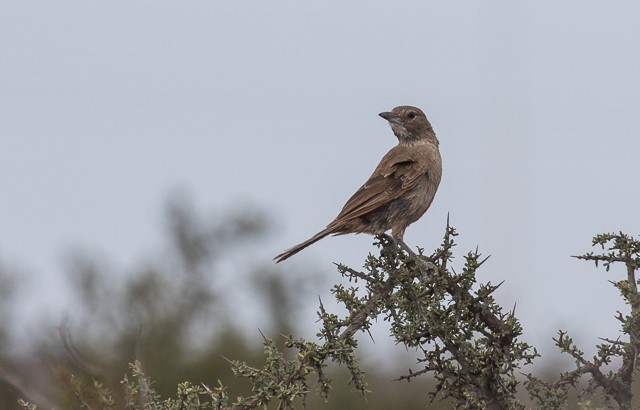
The endemic White-throated Cacholote near its nest.
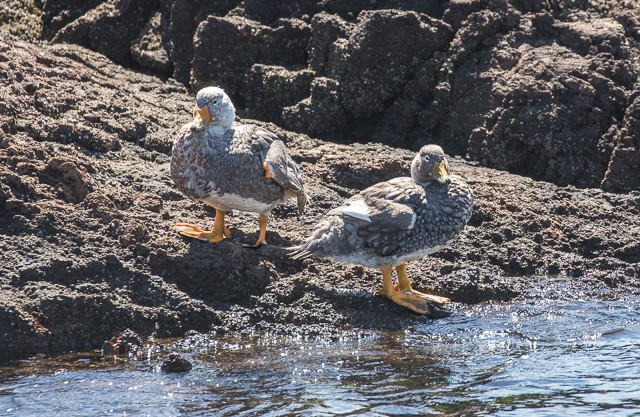
A pair of White-headed Steamer-Ducks endemic to this region.
Mammals are always a highlight on any trip through Patagonia. There were several highlights among the 17 species we saw including a very confiding Argentine Gray Fox. A pair of these ‘false foxes’ were stretched out across the road outside Punta Tombo. They were so approachable in fact those who wanted got out of the van and got quite close for a serious dose of photographs.
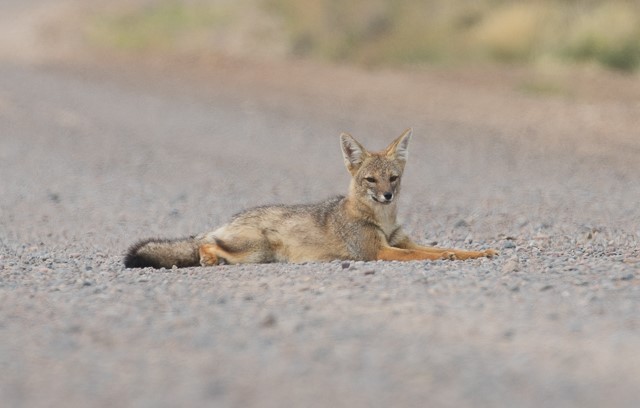
an Argentine Gray Fox lounging in the road.
Most of the reptiles, especially the snakes, that we see tend to be roadkill at some point during the trip meeting their demise from unsuspecting drivers. Due to the temperatures being in the perfect range this year we got to see a couple live ones, including a monte desert endemic Mousehole Snake crossing the road at Punta Piramides.
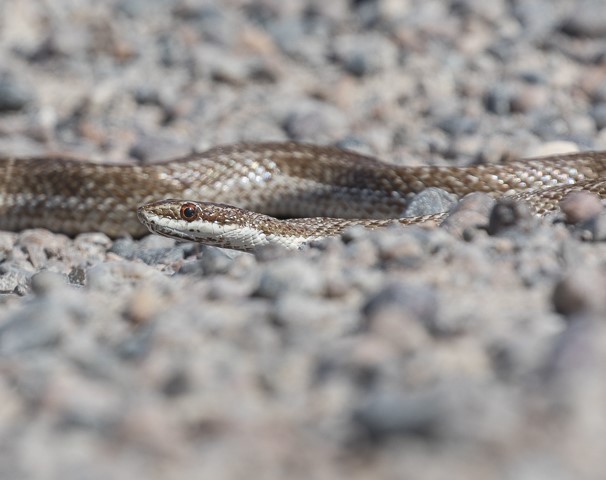
A docile Mousehole Snake on a dusty road.
A constant wanderer around the breeding Southern Sea Lion and Elephant Seal colonies is the Snowy Sheathbill. This odd bird is the custodian of the mammal groups, frequently cleaning up scraps of afterbirths and carcasses. It was a good year for this species. A sign of good times, or maybe bad?
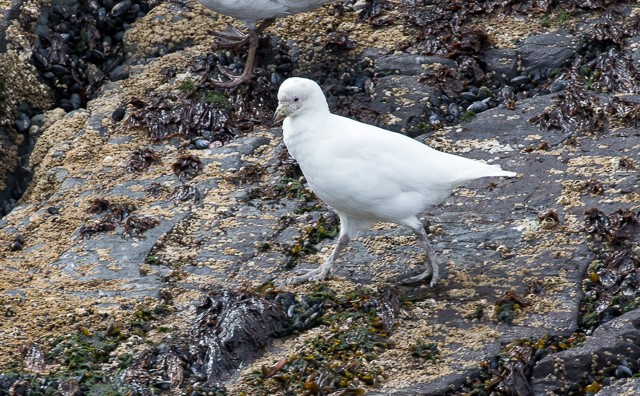
Snowy Sheathbill walks through the Sea Lion colony.
January 25:
Jared Clarke reports from our recent Newfoundland in Winter 2023 tour
The first of two “Newfoundland in Winter” tours this year was held January 7-13, with five excited birders braving the elements to enjoy some wonderful winter birding. Participants traveled from across the United States to enjoy the diversity of northern species that call this island home, and they were not disappointed. Dovekies had been scarce so far this season, but our group’s persistence paid off and we eventually found several throughout the week – including close-up views of one very obliging bird in a sheltered boat harbour.
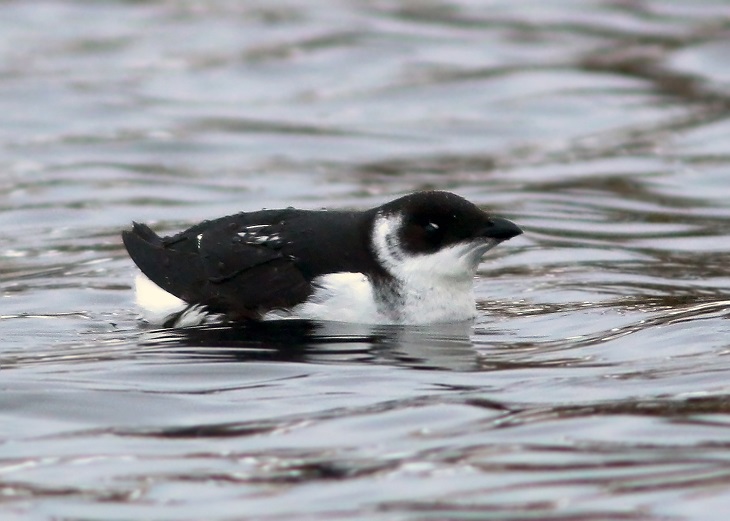
We also enjoyed great looks at a Thick-billed Murre loafing on the waters of Conception Bay, and several Razorbills battling much rougher seas of the open North Atlantic. Sought-after birds like Purple Sandpiper, Tufted Duck, Black-headed Gull and Great Cormorant were on full display almost daily, and Boreal Chickadees popped in to visit as we strolled forest trails.

A Pink-footed Goose, a rare visitor from Europe, was an added highlight everyone and a “lifer” for most.

We enjoyed seeing numerous seals, including two extremely handsome Harp Seals lounging at a yacht club.

An exciting encounter with three Willow Ptarmigan and a beautiful Rough-legged Hawk on the snow-covered tundra rounded off a fantastic week of winter birding at the edge of the continent!
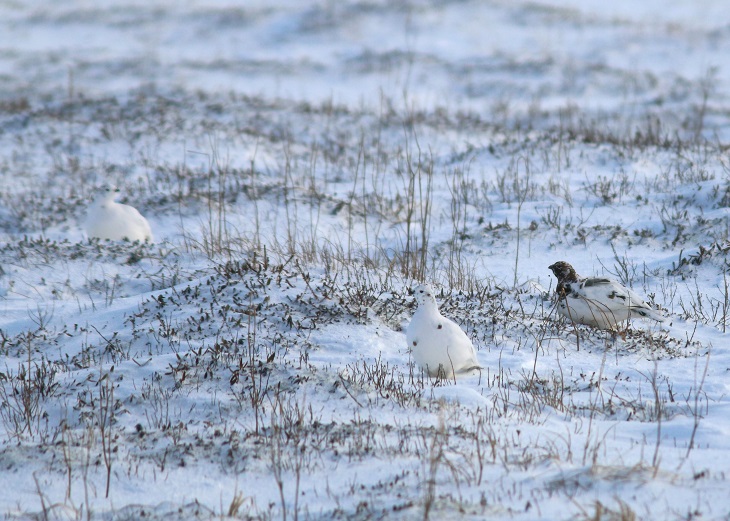
Also seen on this tour were:
Bohemian Waxwings
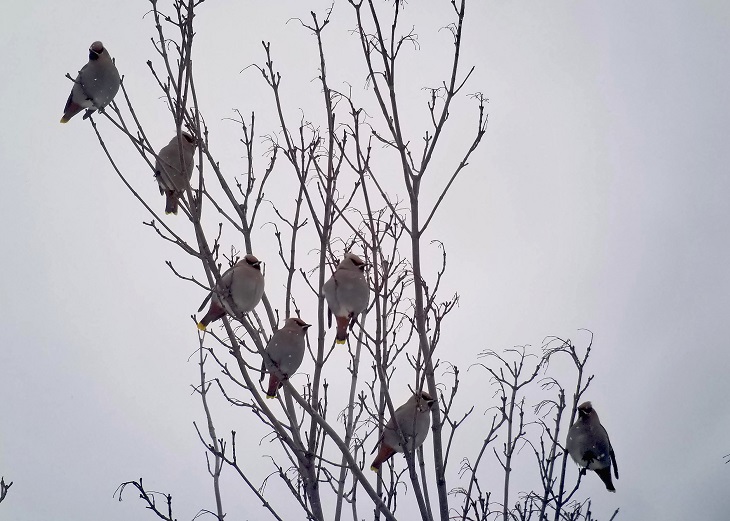
Eurasian Wigeon
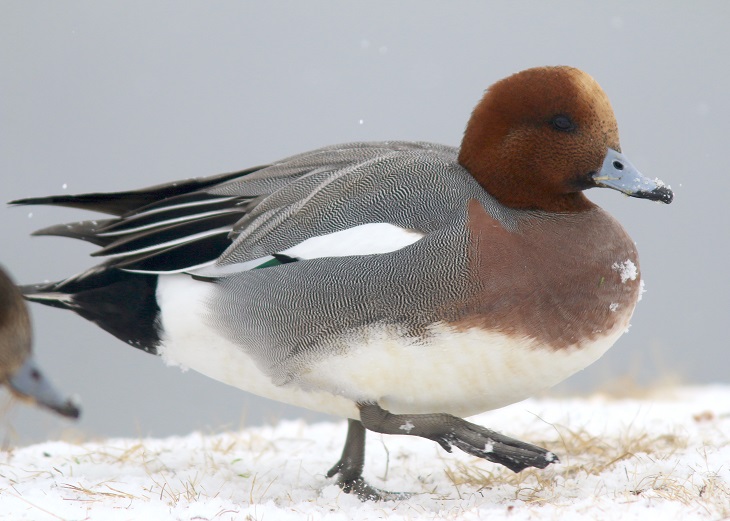
Black-headed Gull
